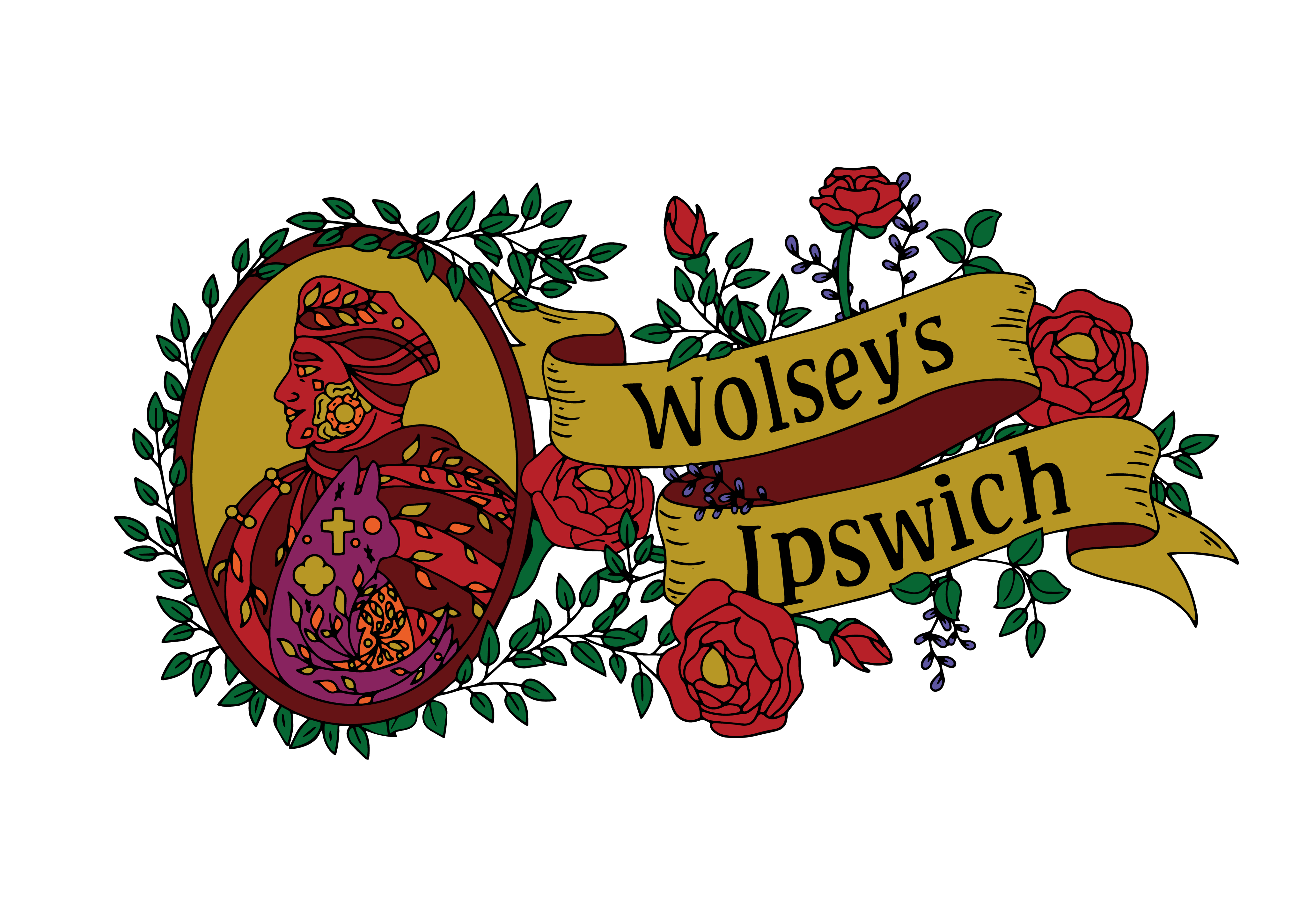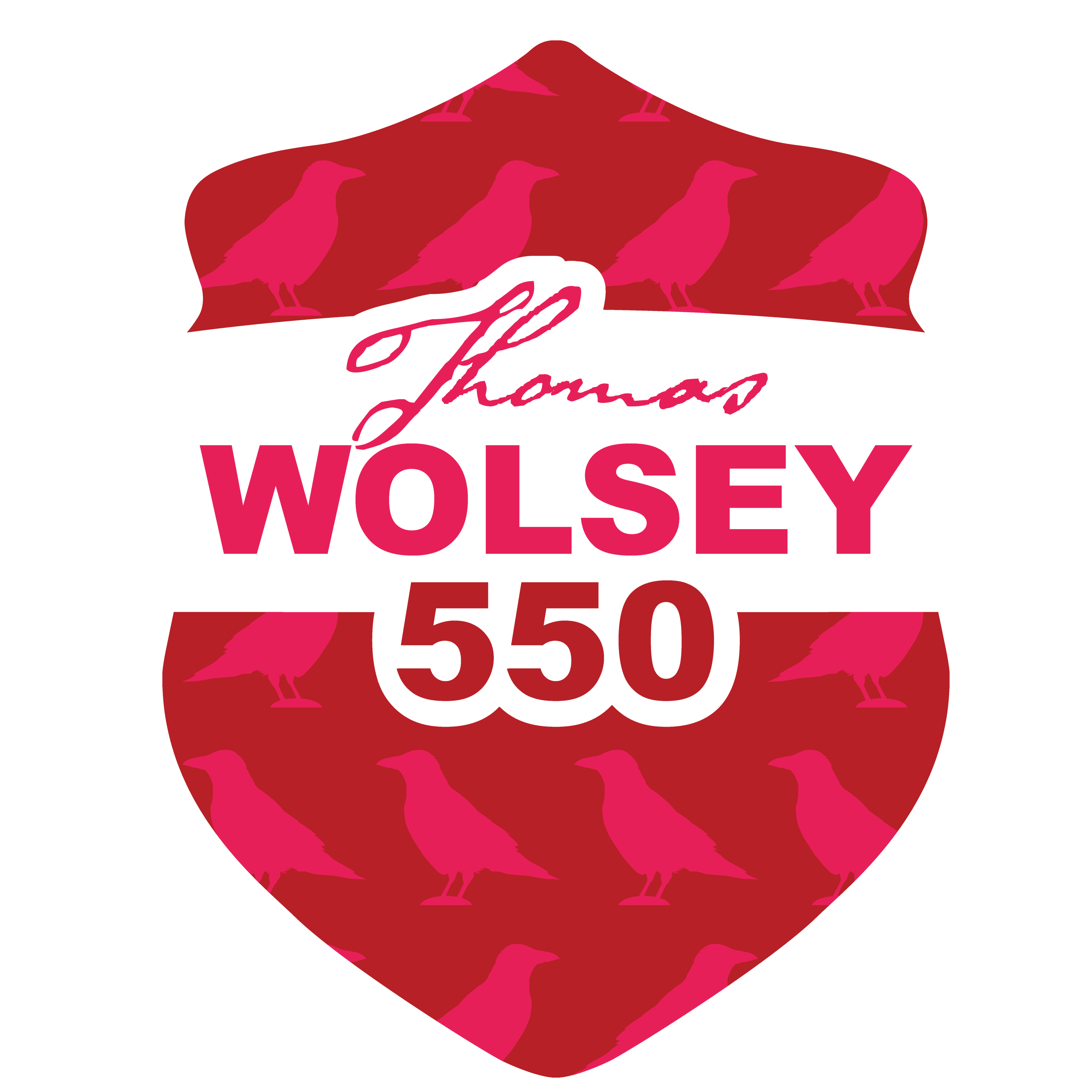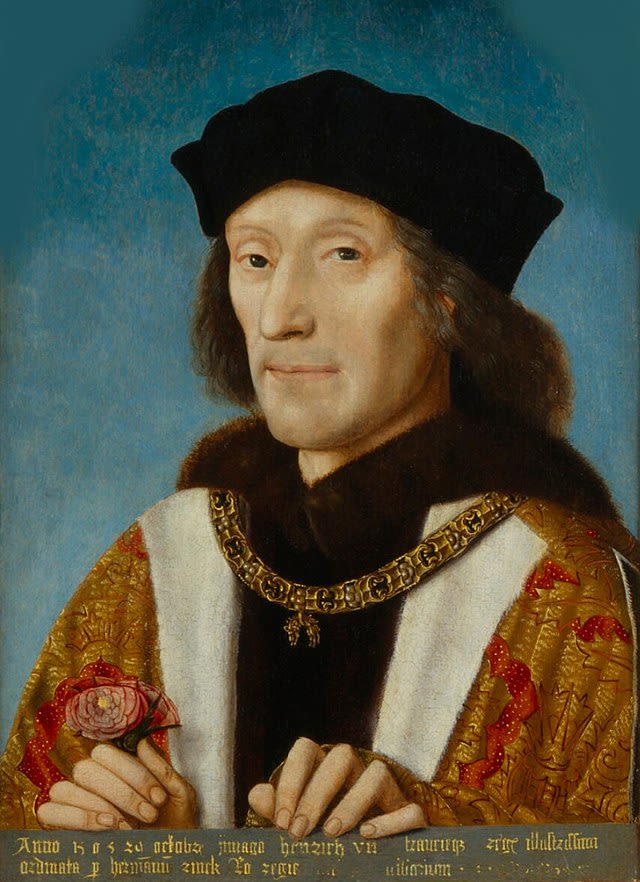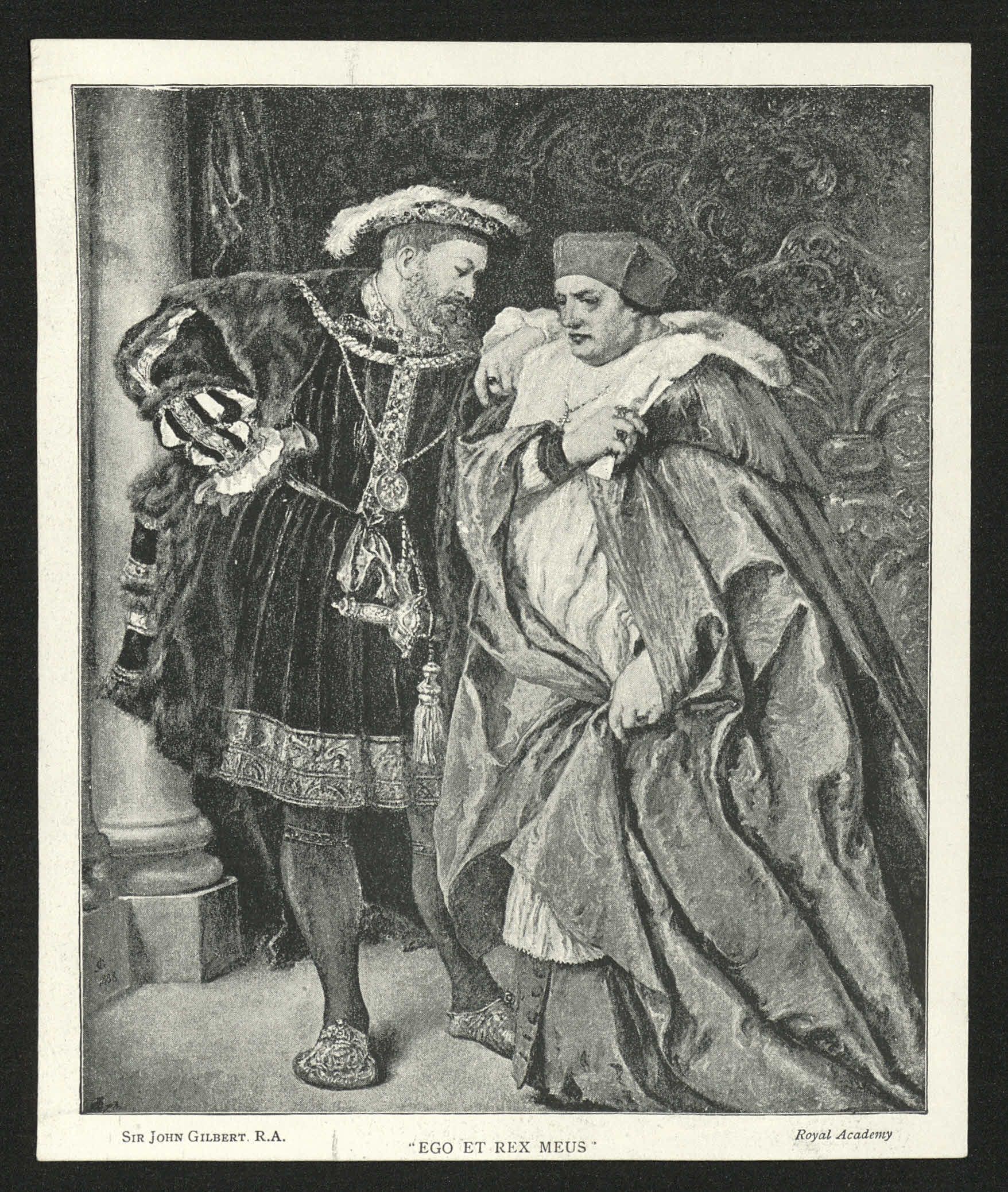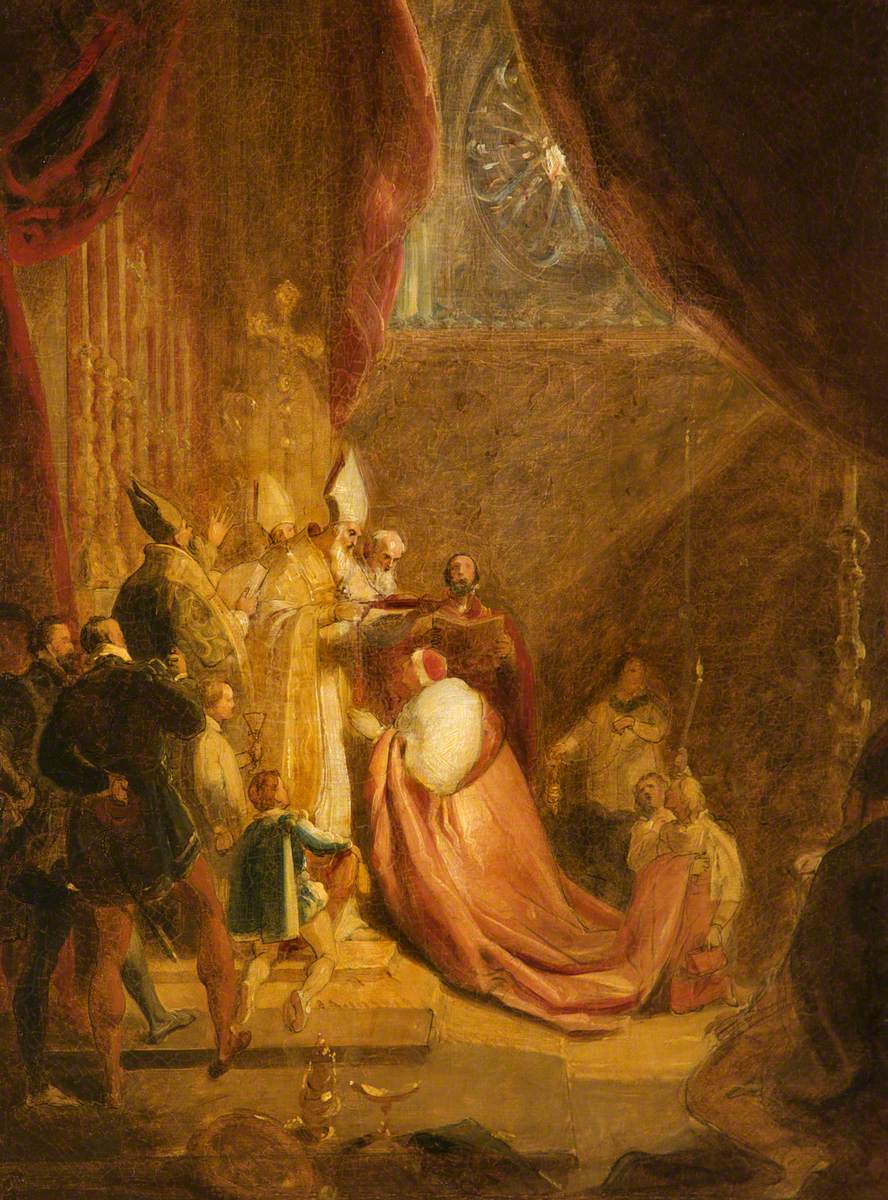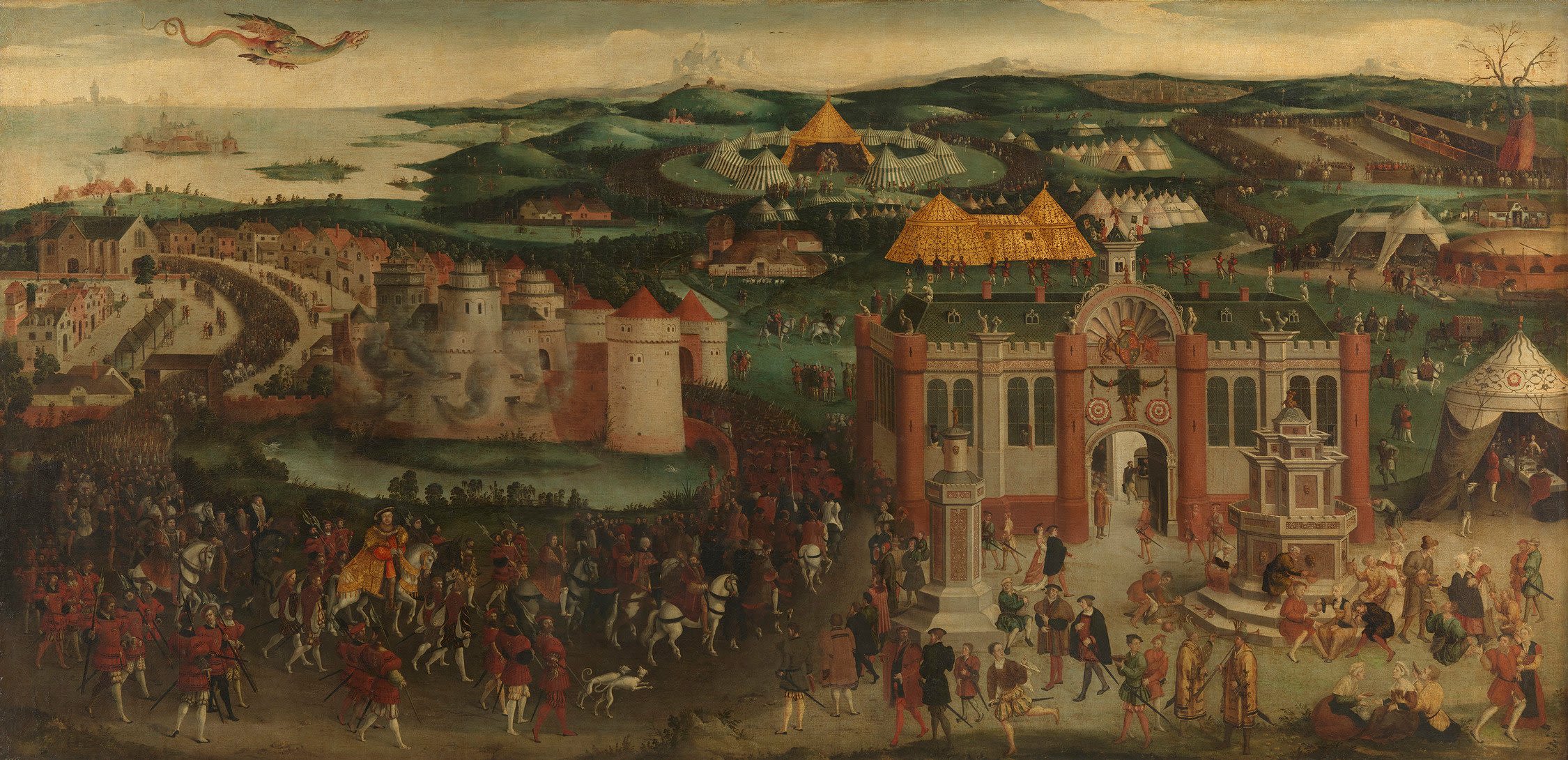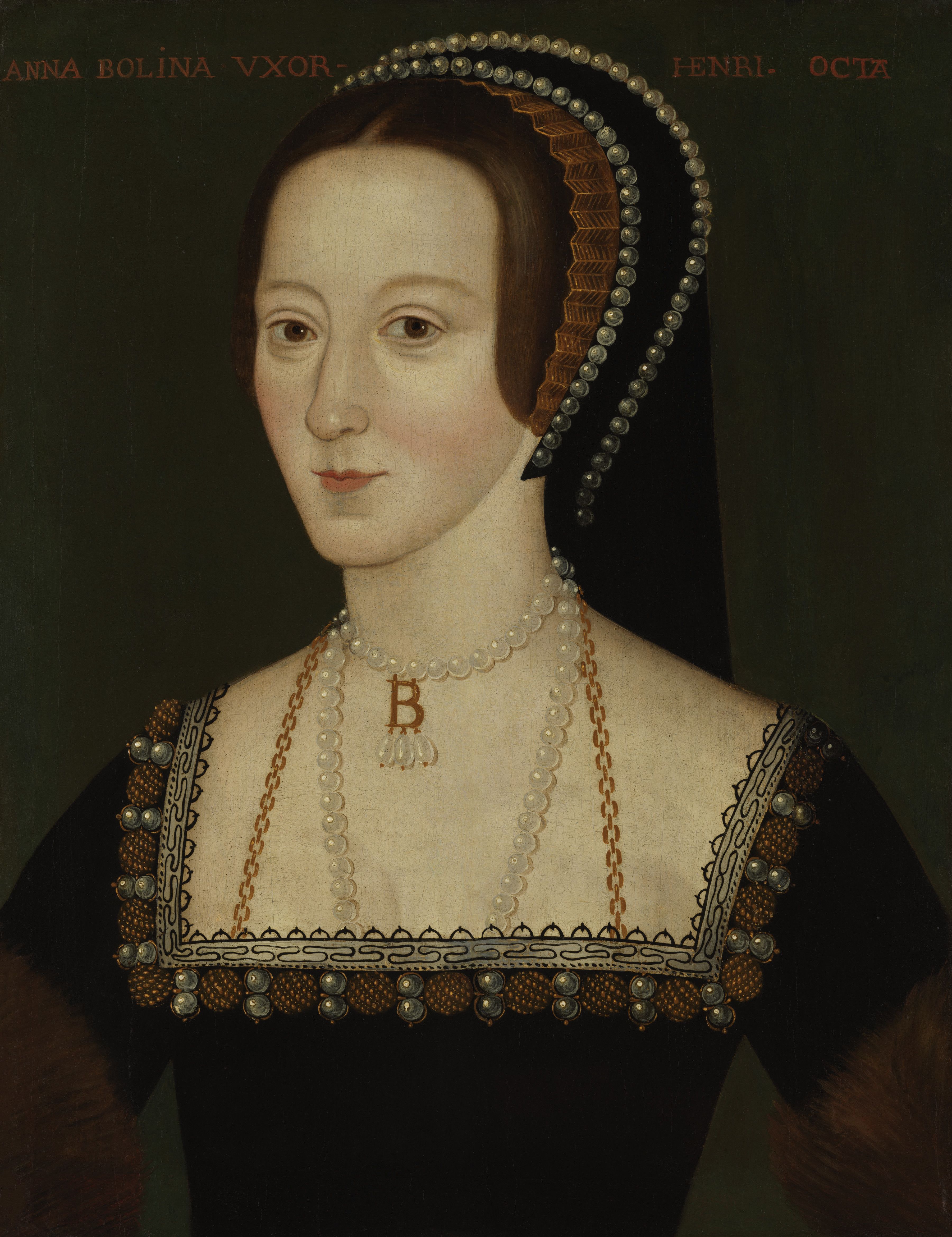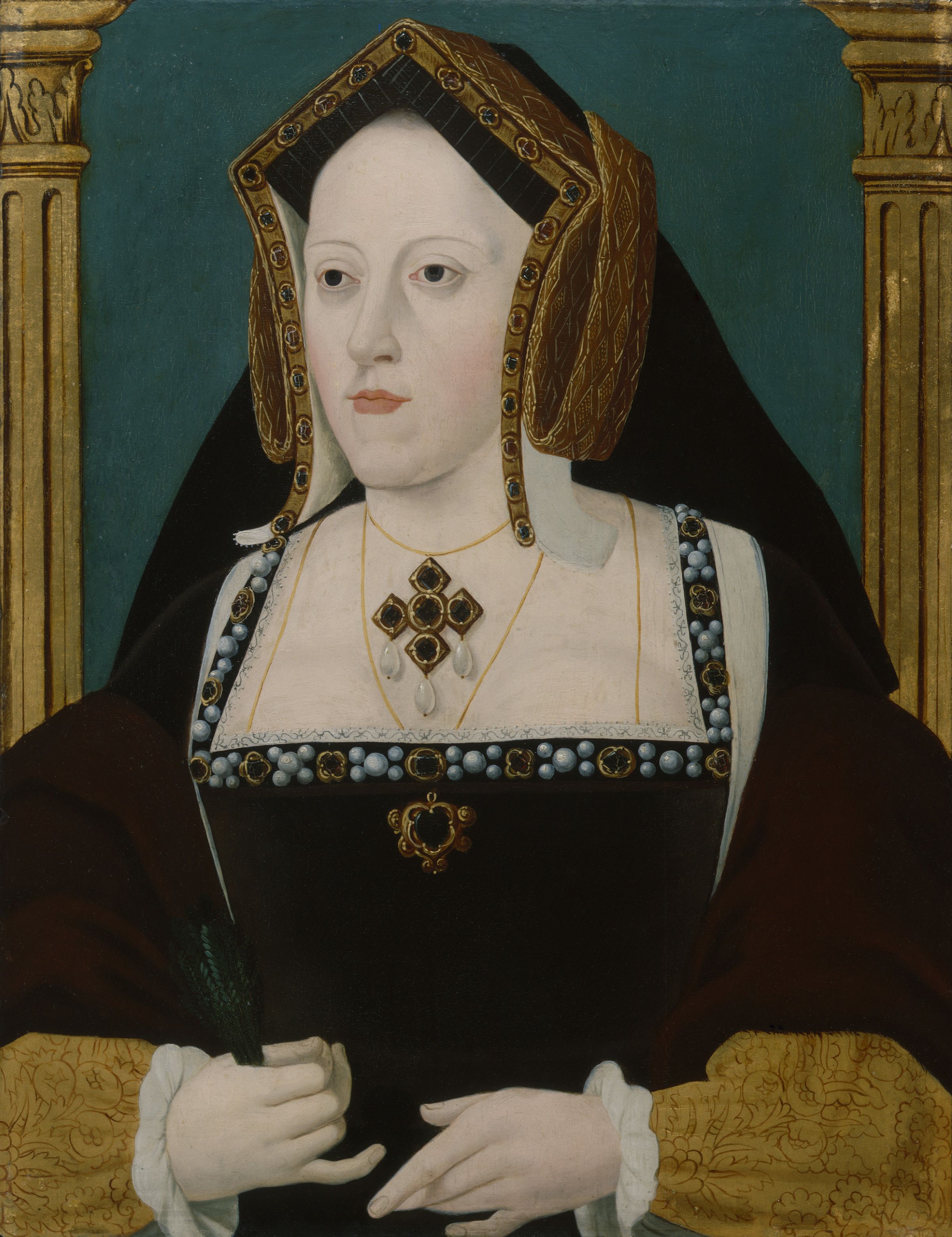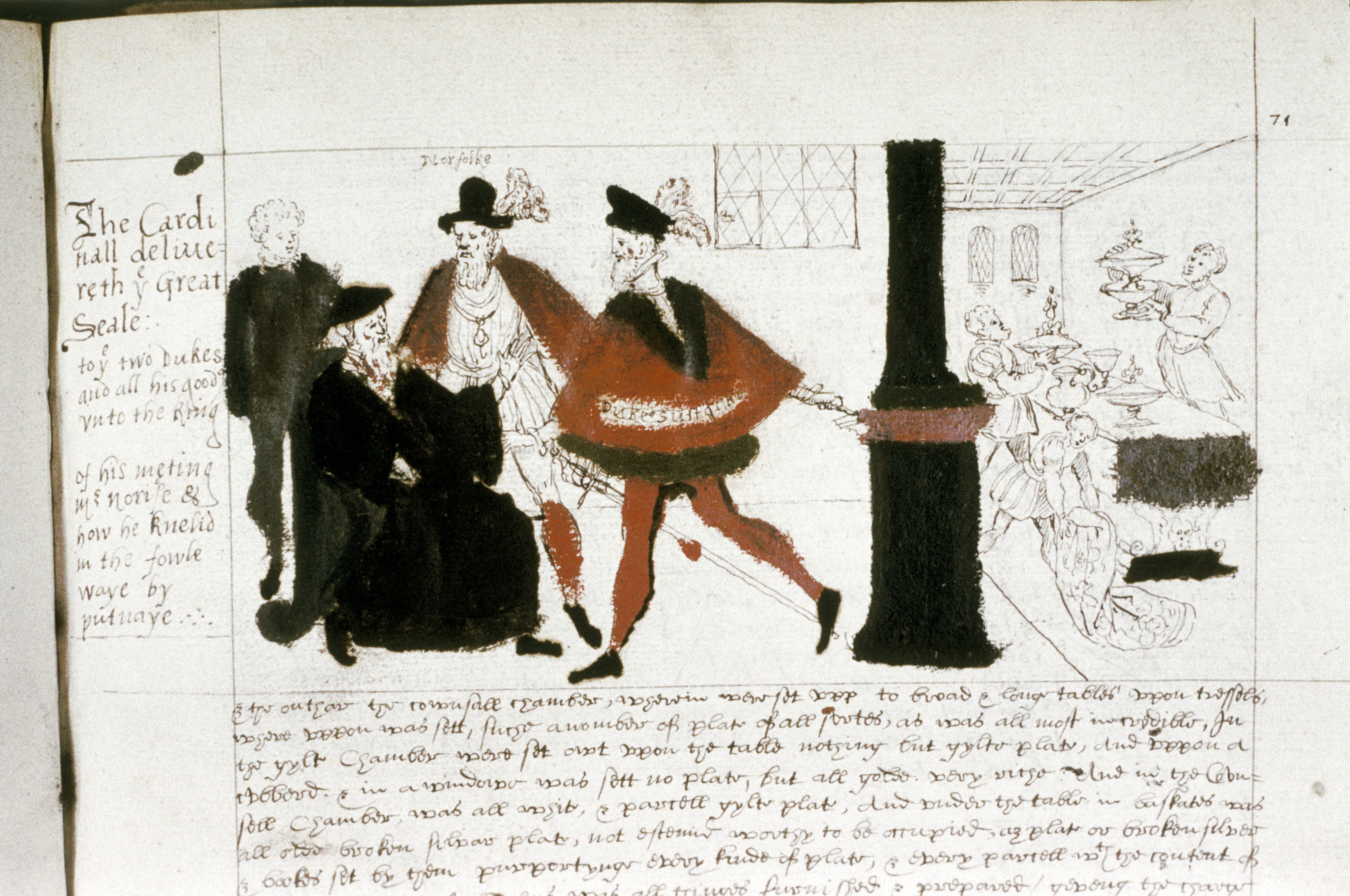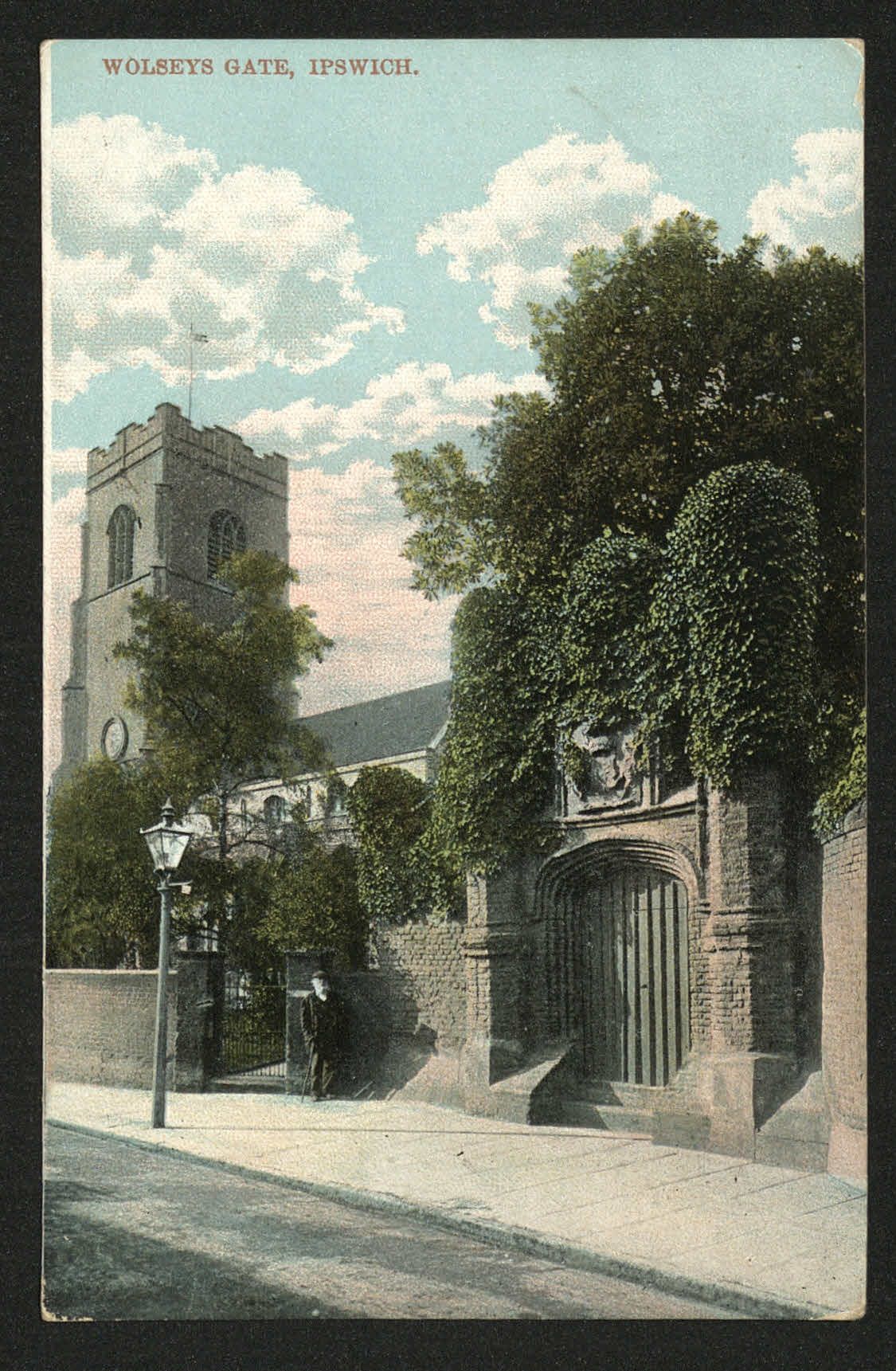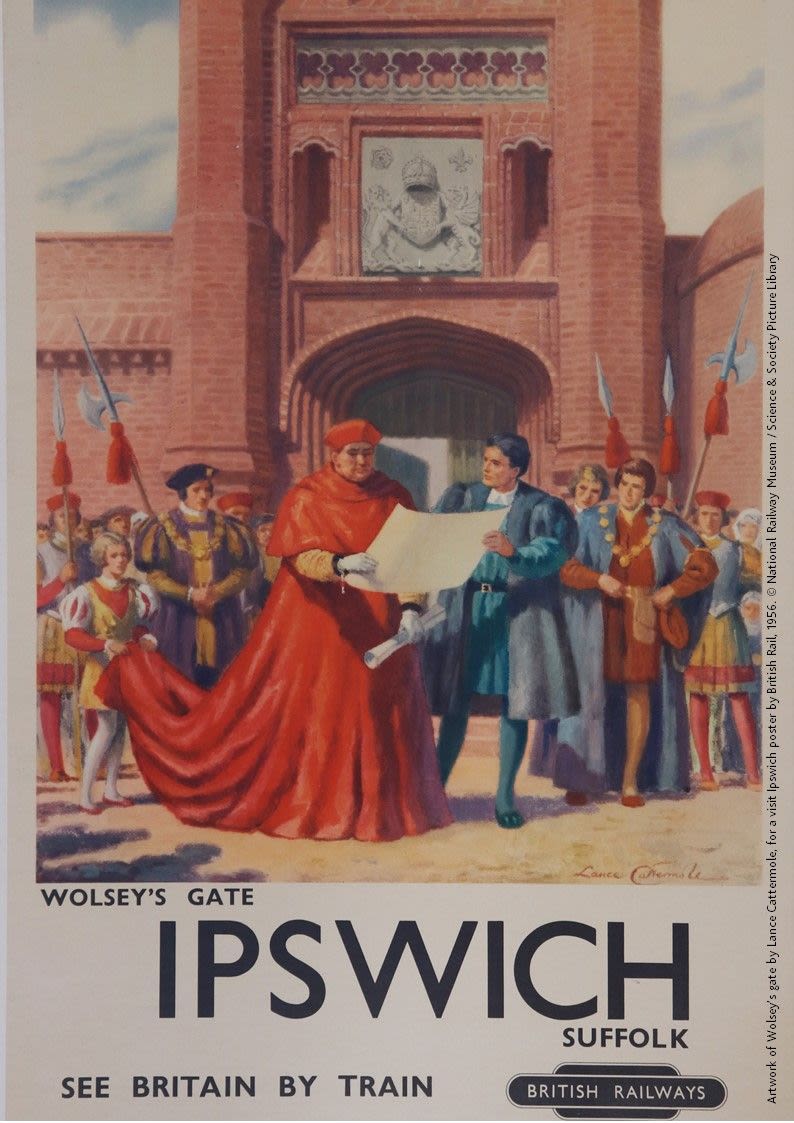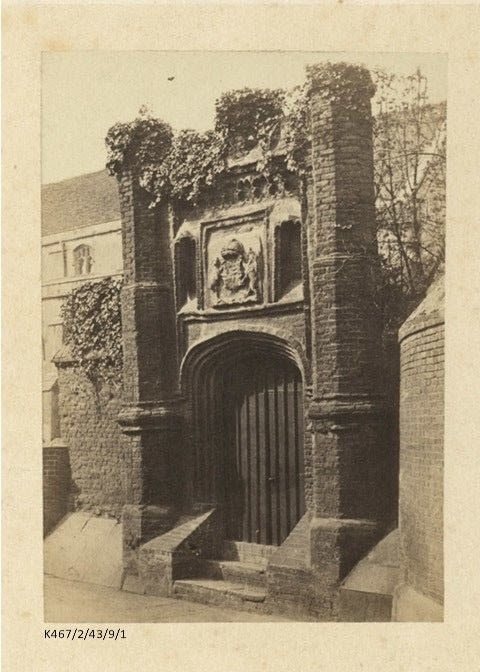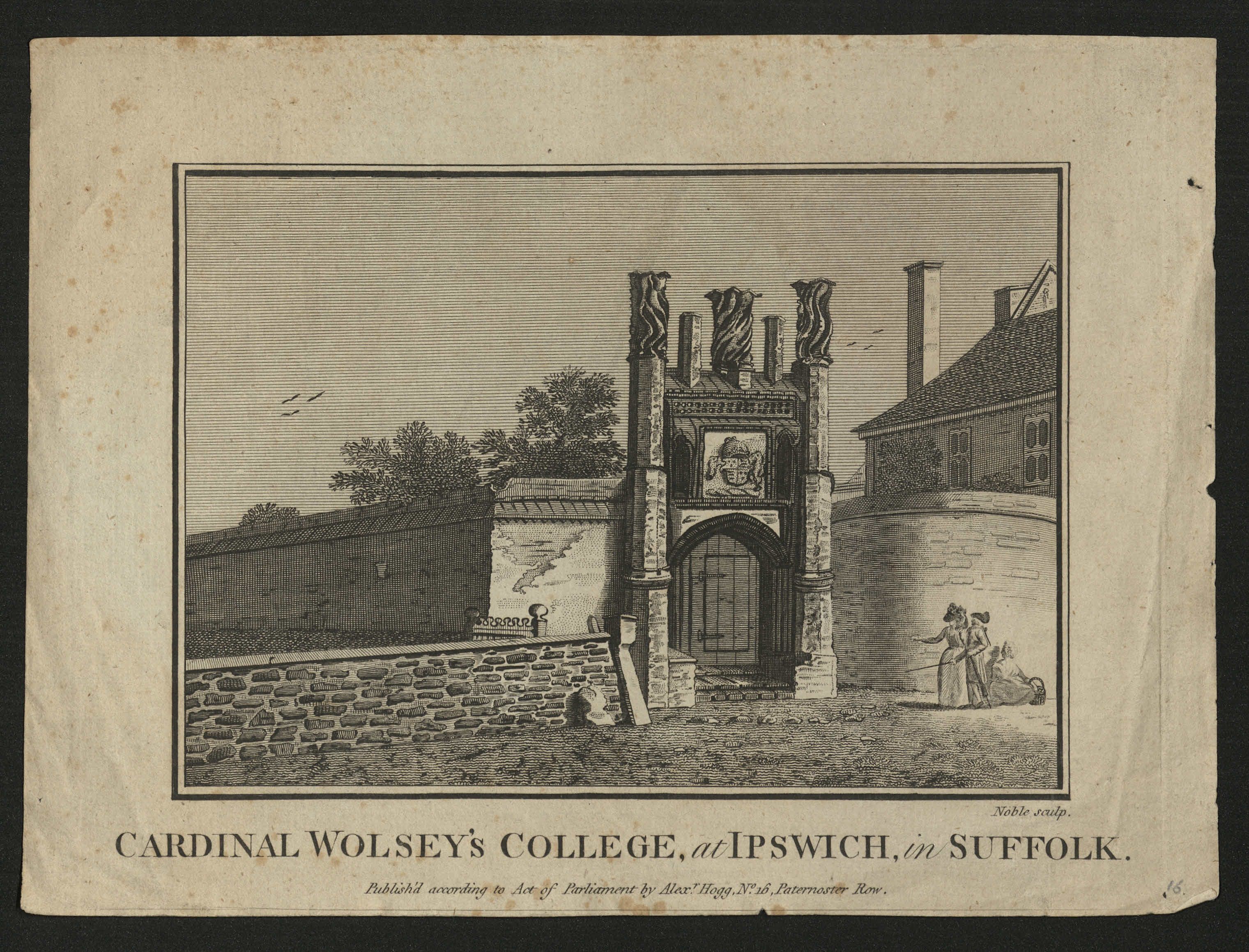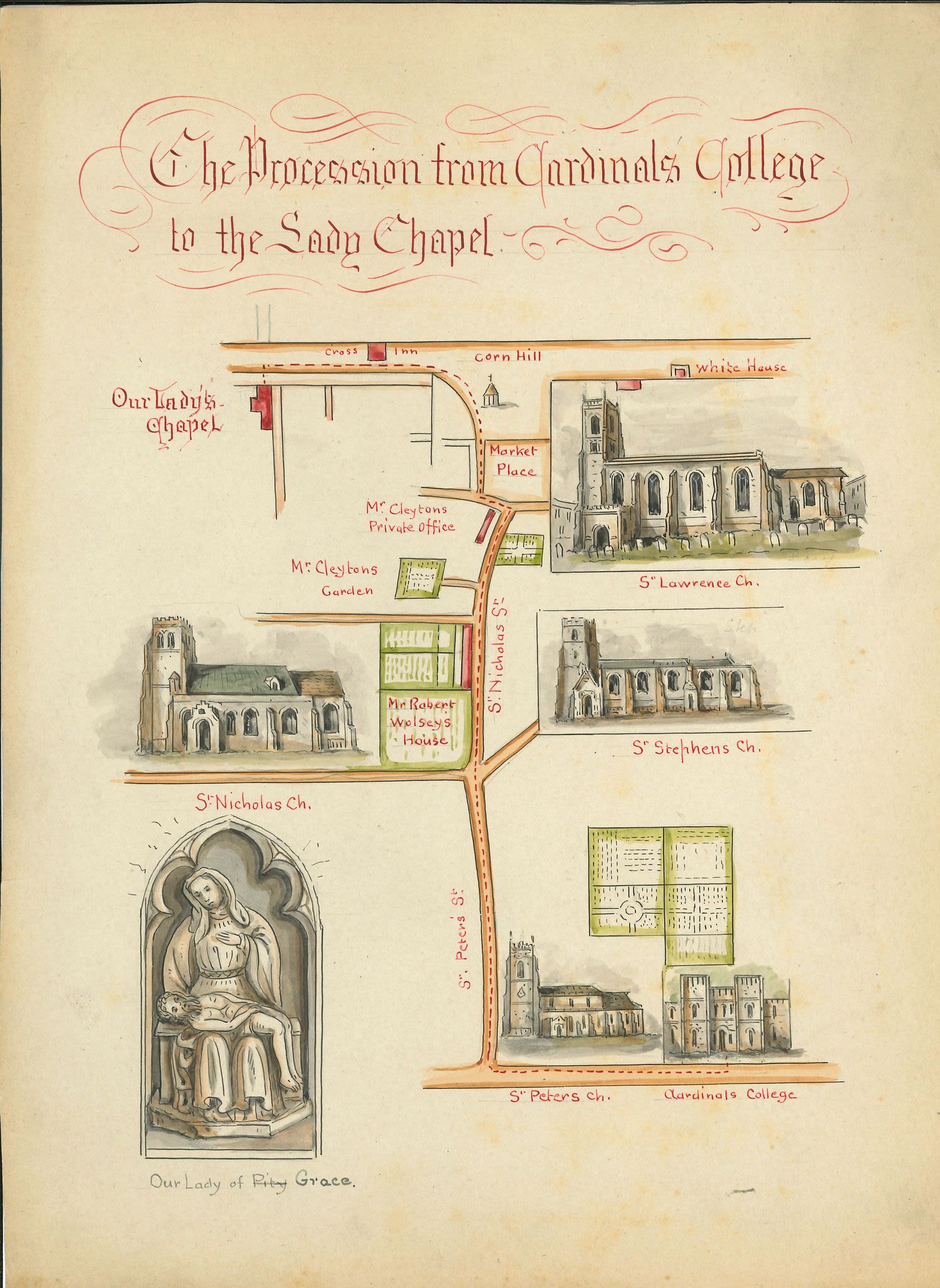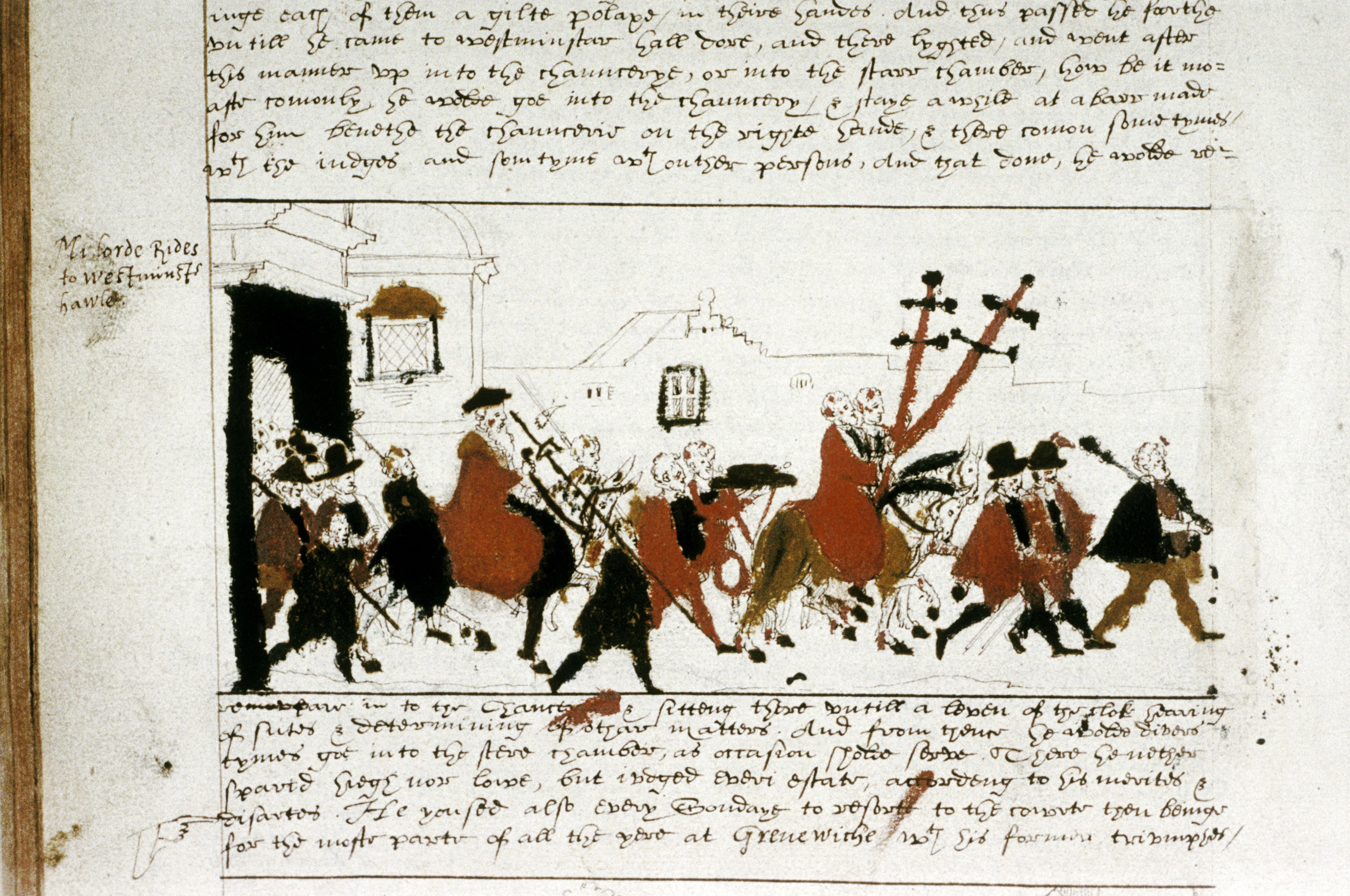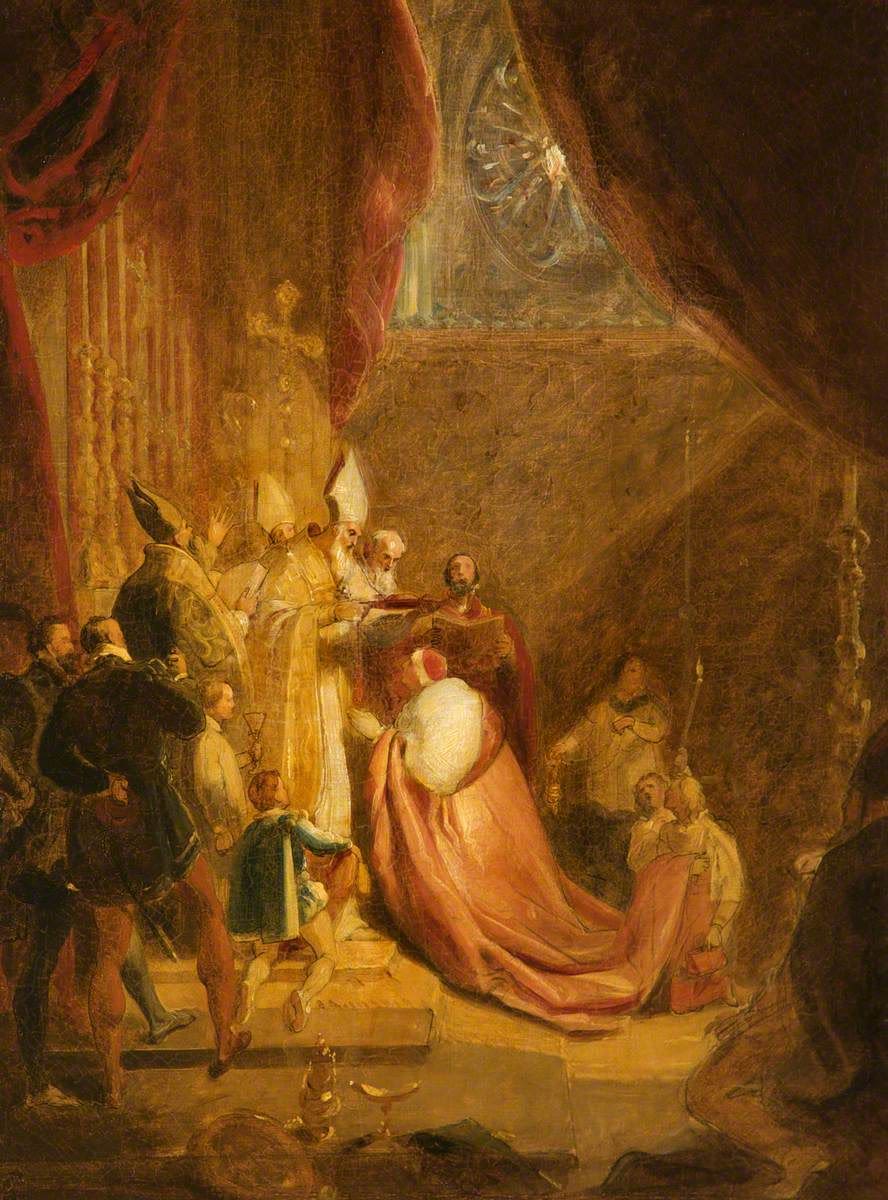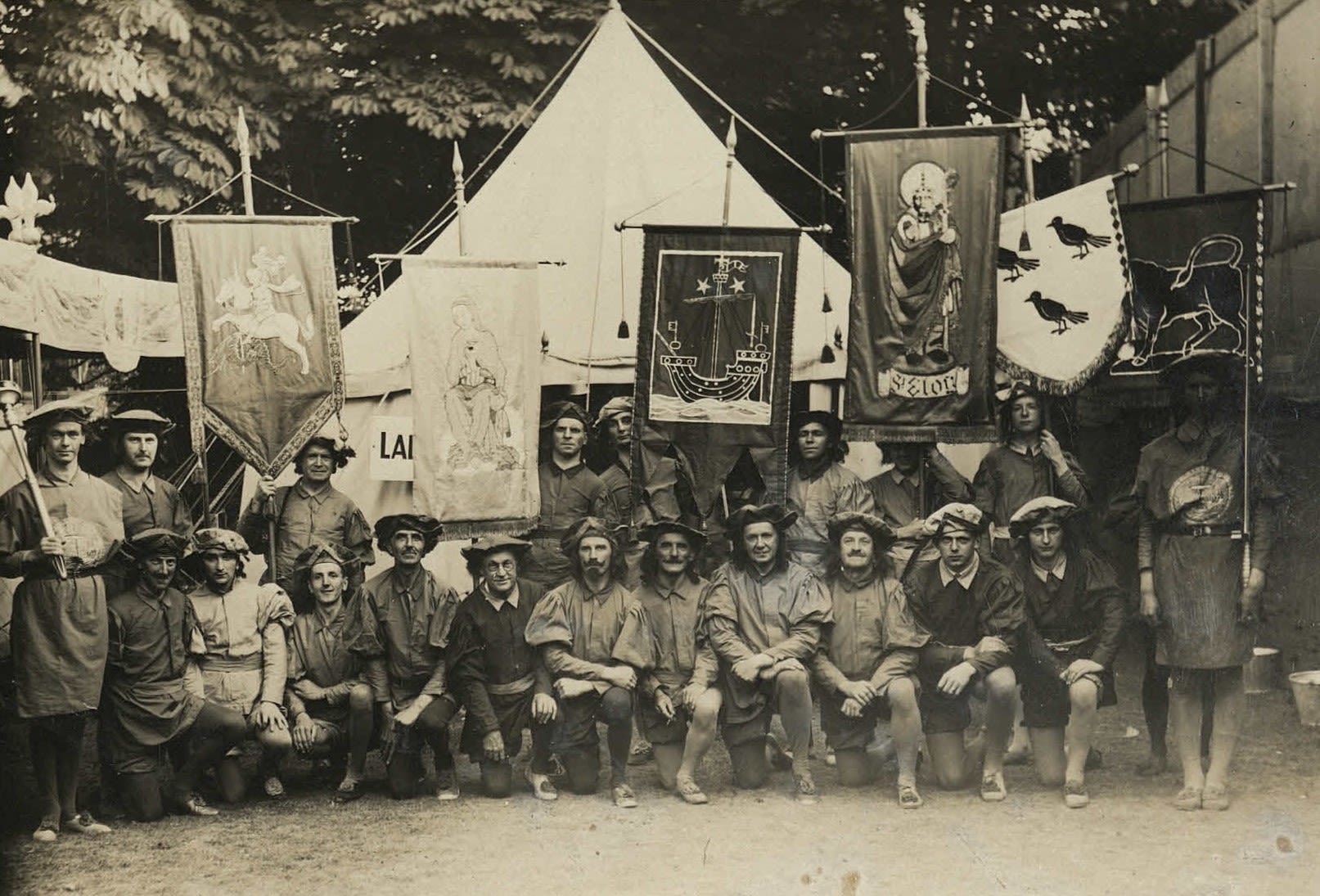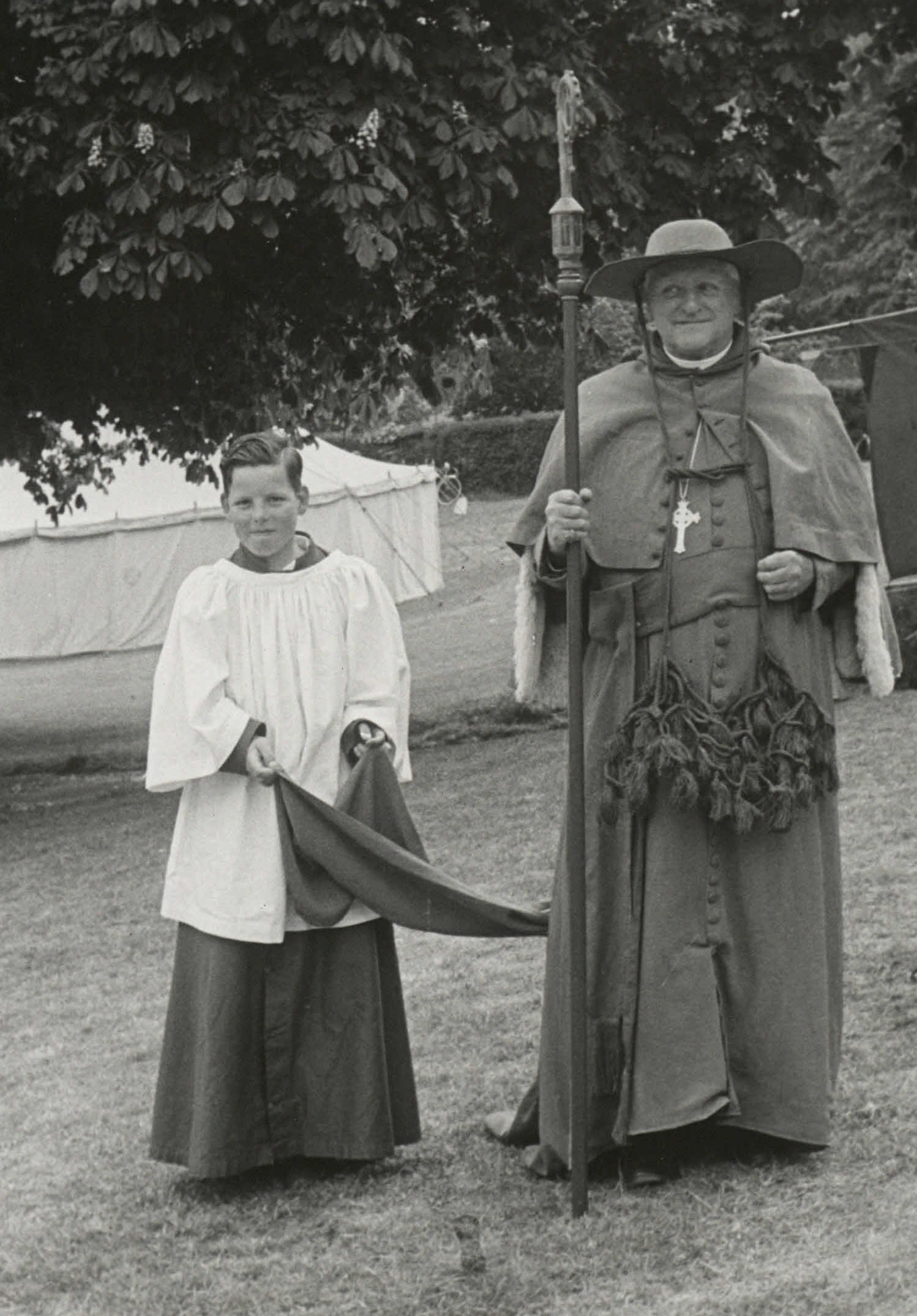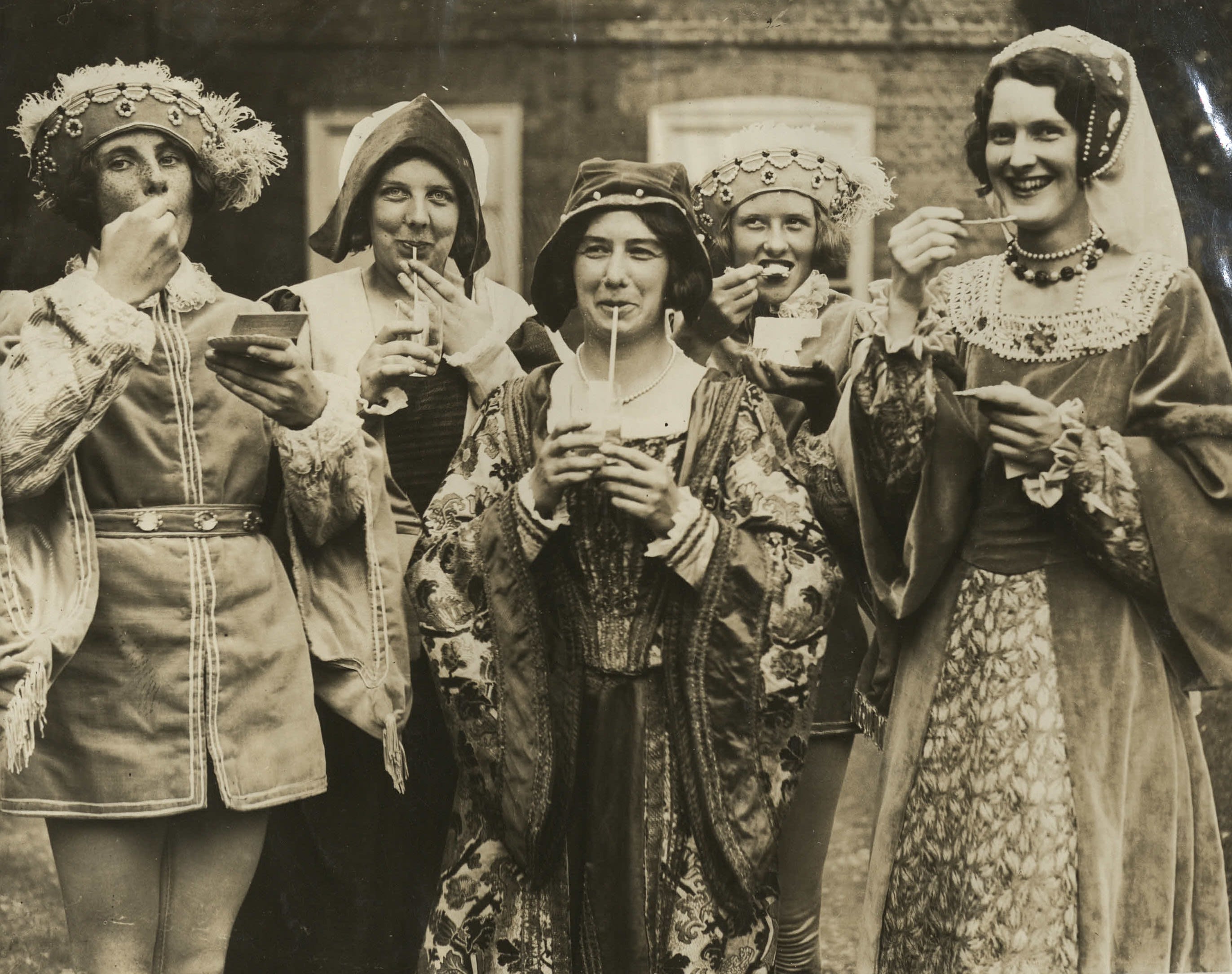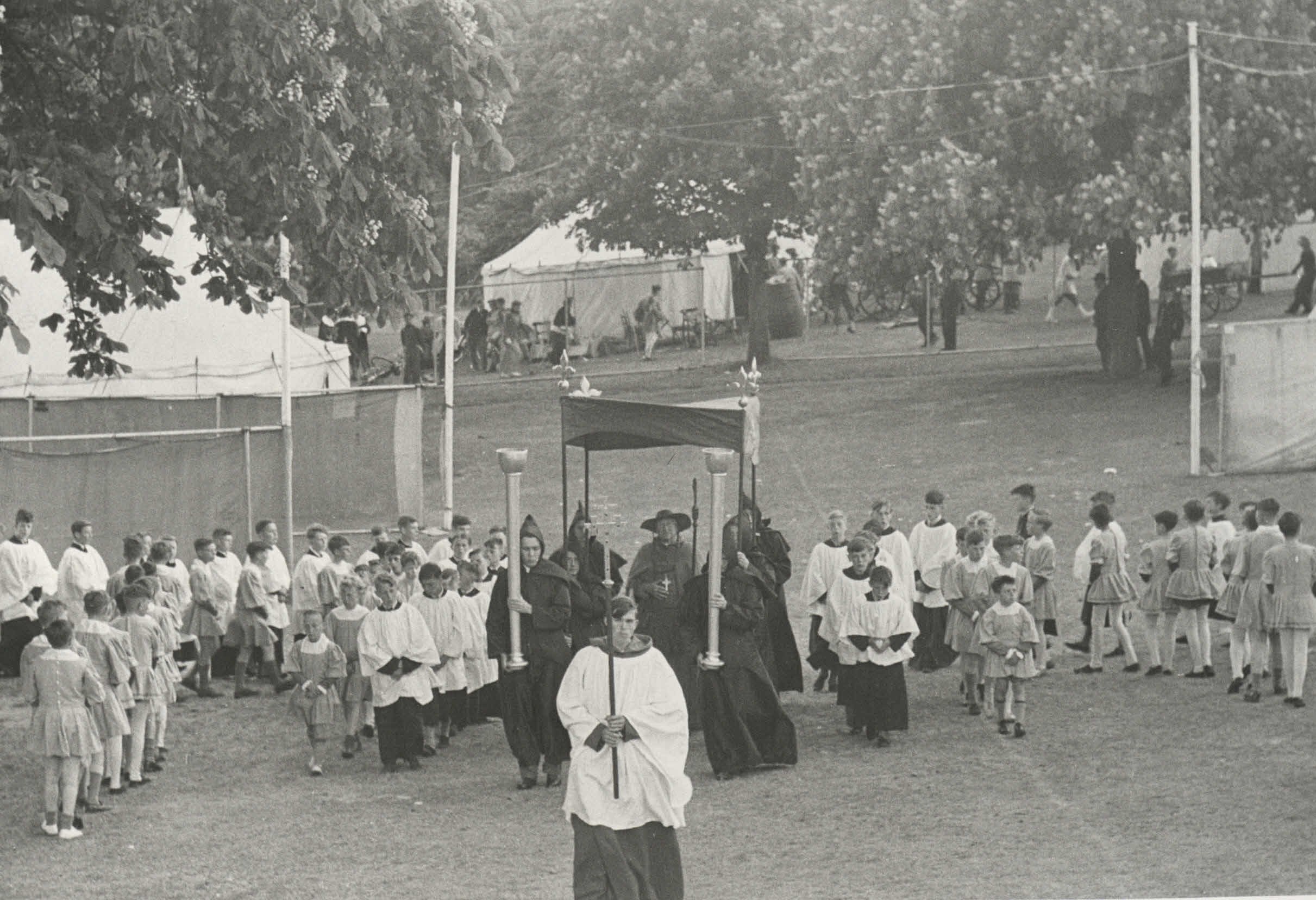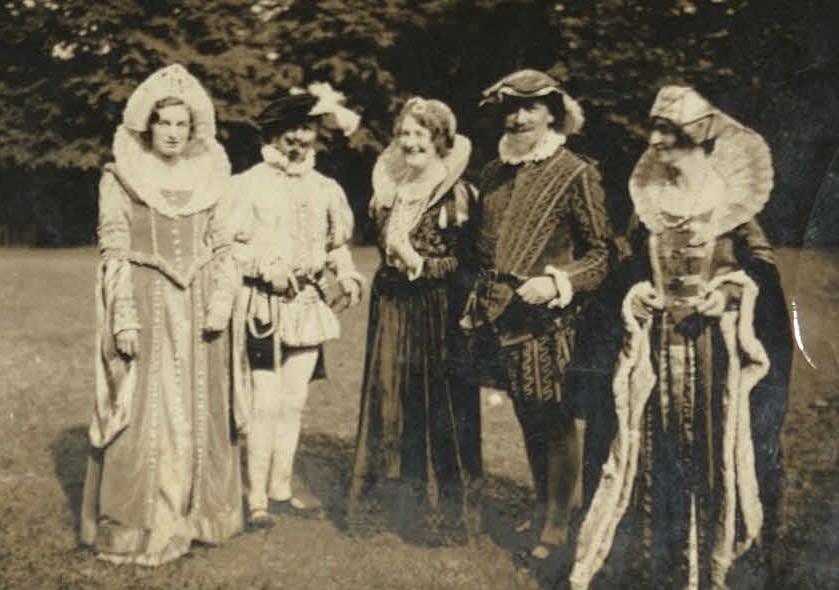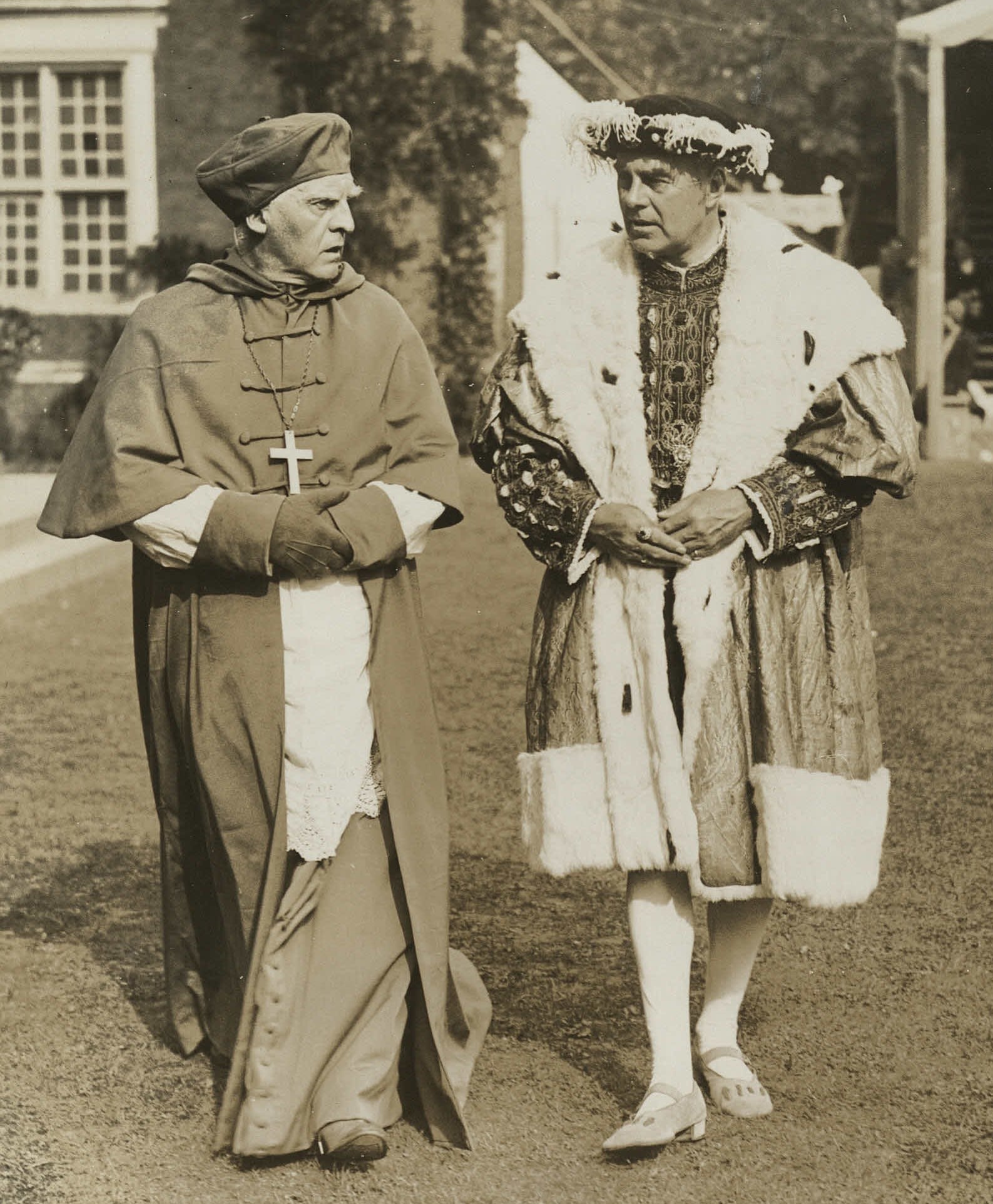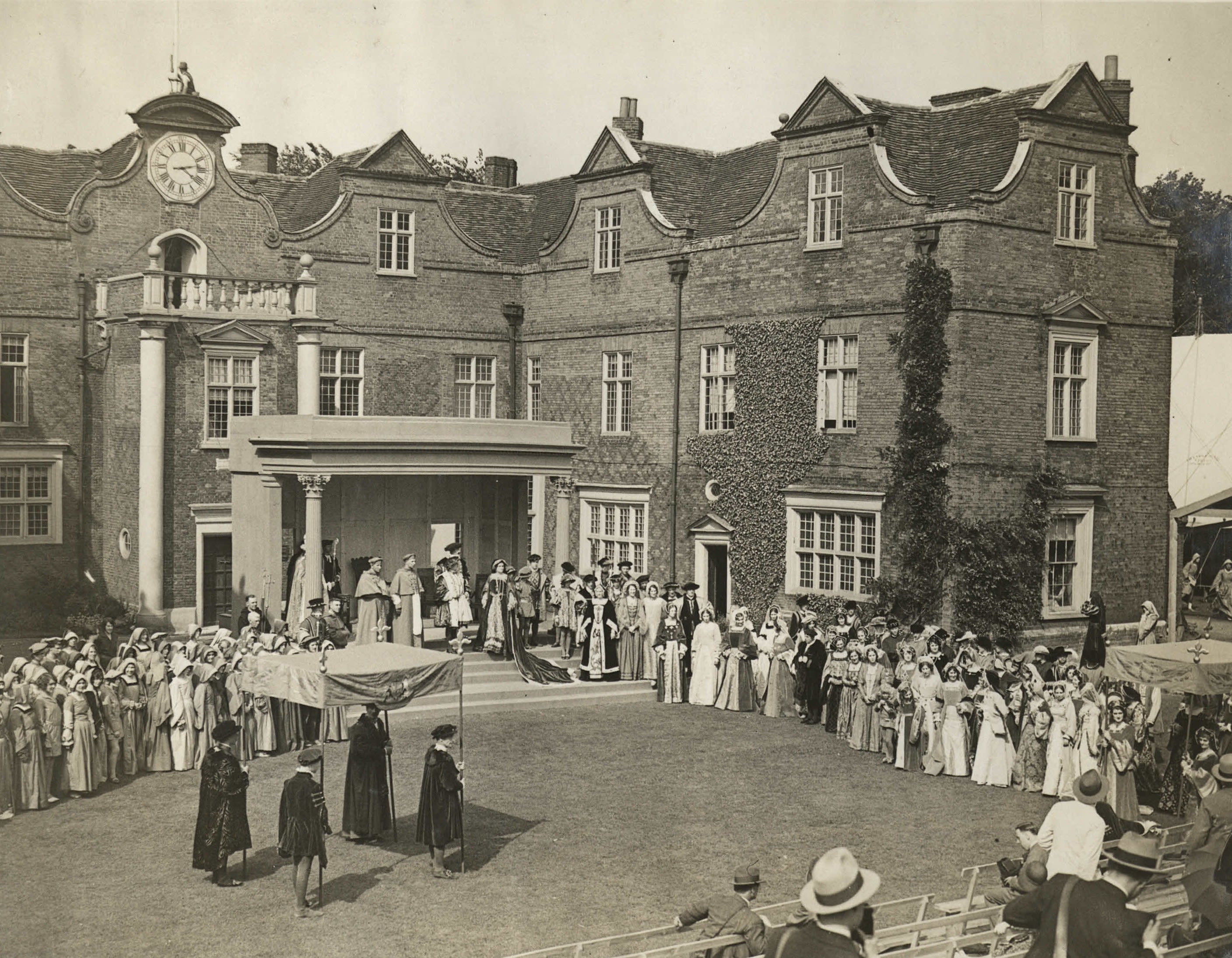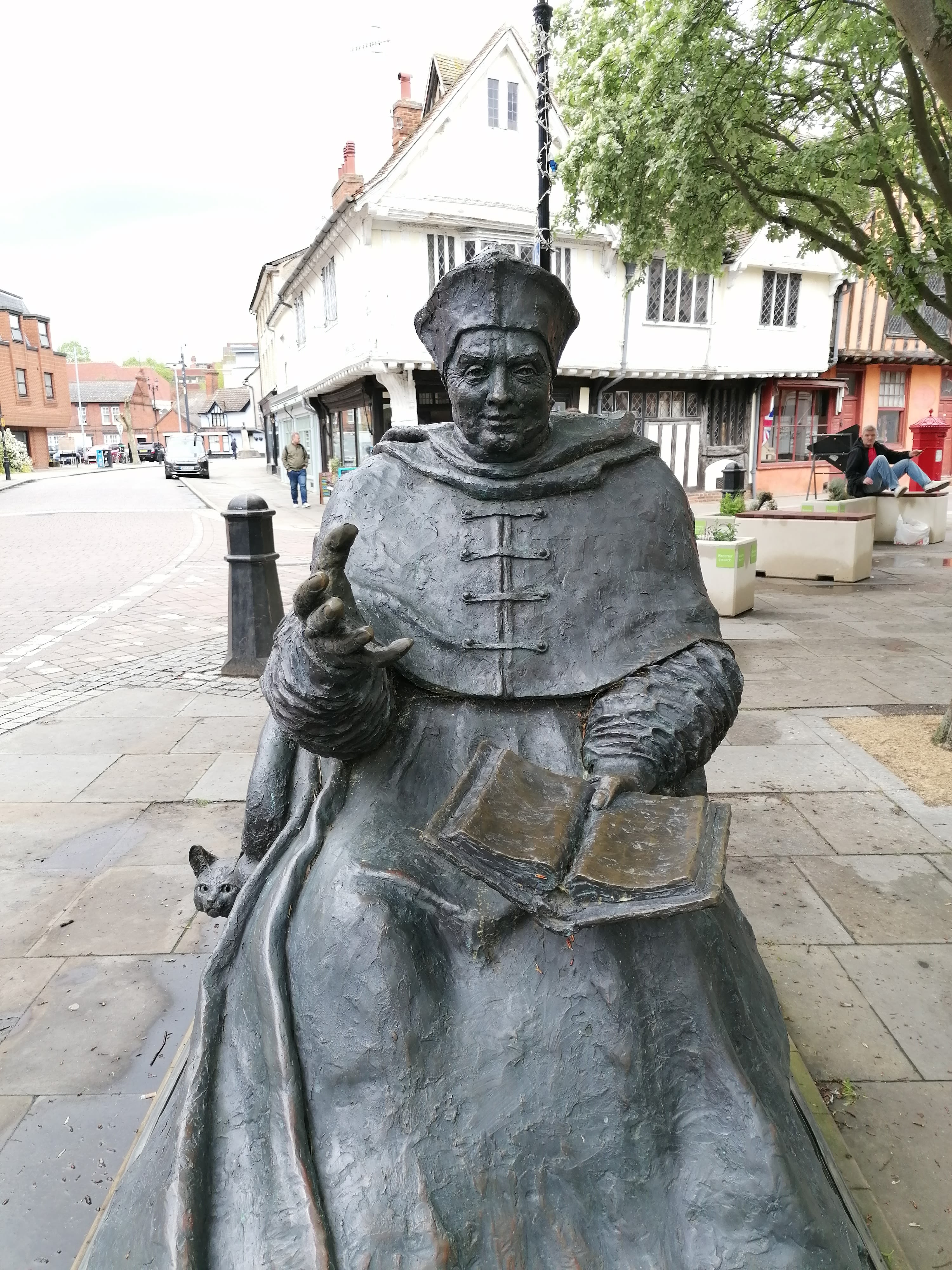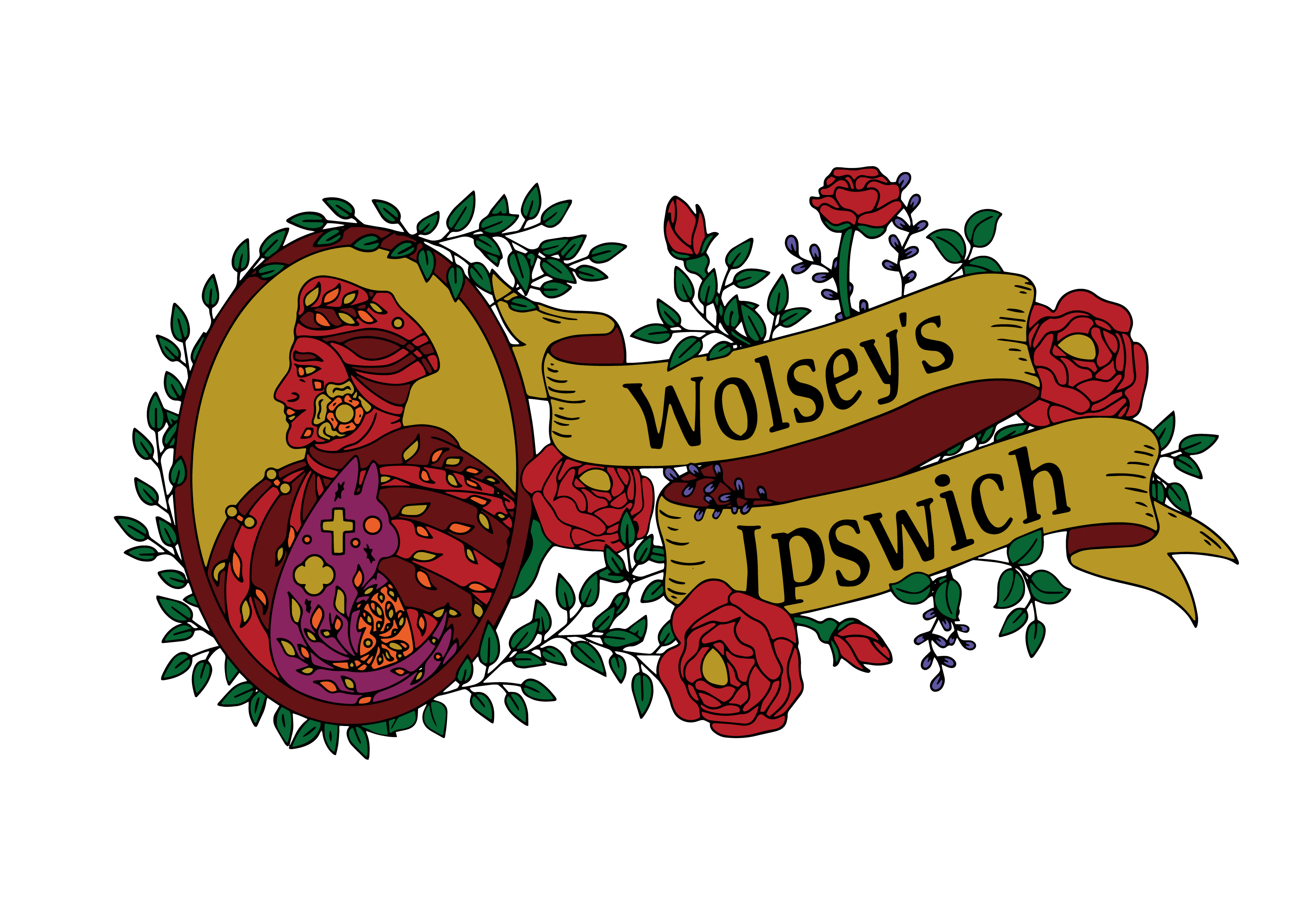
As part of the Wolsey 550 project this exhibition explores the life and legacy of Cardinal Thomas Wolsey, celebrating the 550th year since his birth.
Born and raised in Ipswich Wolsey rose from humble beginnings to become the most powerful man in England, working alongside King Henry VIII. He had many supporters and just as many enemies at a time when your fortunes could change rapidly depending on the favour of the King.
Wolsey has been described as hard working, ambitious and a self-made man. Also as greedy, ruthless and an Alter-Rex - trying to take over the power of the King.
But what do you think? Have a look through this online version of our exhibition to find out!

Timeline
1473
Thomas Wolsey is born in Ipswich
c.1478
Wolsey starts school at Ipswich School
1484
Starts University at Magdalen College Oxford and graduates in 1488 aged 15.
1489
Started work at Magdalen College as a bursar and later as a priest and Dean of Divinity.
King Henry VII
King Henry VII
1507
Entered service of King Henry VII as Secretary to Richard Foxe. The King was keen to promote new staff from work class backgrounds.
24 June 1509
King Henry VIII and Catherine of Aragon are crowned at Westminster Abbey. Wolsey was not invited.
November 1509
Wolsey was made Royal Almoner in charge of granting gifts. Importantly the role gave him a seat at the King’s Council where all key matters were discussed.
1511
Despite personally being against it Wolsey supported Henry VIII’s plan to invade France as he knew it would build his relationship with the King as his trusted advisor.
1514
Started building Hampton Court Palace.
1515
At the request of King Henry VIII, Pope Leo X made Wolsey a cardinal.
1515
King Henry VIII makes Wolsey Lord Chancellor of England. Wolsey is at the height of his power with responsibilities for both church and state.
June 1520
Field of the Cloth of Gold coordinated by Wolsey to improve friendship between England and France towards a peace treaty across Europe.
1524
Establishes Cardinal College Oxford (Christchurch College)
1525
Amicable Grant is enforced to raise money from taxes to pay for King Henry VIII’s war with France. There was widespread objection, and the tax was rapidly withdrawn.
Anne Boleyn
Anne Boleyn
1527
Wolsey is instructed to obtain an annulment for King Henry VIII for his marriage to Catherine of Aragon so he can marry Anne Boleyn and produce a male heir.
1528
Work starts on cardinal college Ipswich.
Queen Catherine of Aragon
Queen Catherine of Aragon
June 1529
Cardinals Wolsey and Campeggio preside a legatine court to rule on whether the Kings marriage was null and void. Queen Catherine delivers a powerful speech to say her marriage is valid. The court could not reach a decision and was dissolved.
October 1529
Wolsey pleads guilty to a charge of Praemunire of having overstepped his authority and loses his job as Lord Chancellor.
24 October 1529
Surrenders the Great Seal of office and was sent North to stay in York away from court. Looses most of his titles and income.
1 November 1530
Arrested for High treason and starts the journey back to London for trial.
26 November 1530
Thomas Wolsey dies at Leicester Abbey.
Thomas Wolsey's Family
Thomas Wolsey was born in March 1473 in Ipswich. At the time his parents lived in an inn near St. Mary at the Elms church, but when Thomas was very young, they moved to a new property near to St Nicholas Church which today is close to the Willis building.
His father, Robert Wolsey was a local businessman who had several jobs including as a butcher and an inn keeper. He was fined several times by the local courts for different petty crimes including serving unwholesome pies and running a disorderly inn!
Thomas’ mother was Joan Daundy. She came from a wealthy family of merchant traders in Suffolk. Her brother Edmund Daundy helped to pay for Thomas’ school fees and for him to attend Oxford University.
As he rose to power Thomas’ enemies complained that he came from a humble background and would call him ‘butchers’ boy’ as an insult. At the time it was uncommon for someone not born into a rich noble family to hold such a position of power.
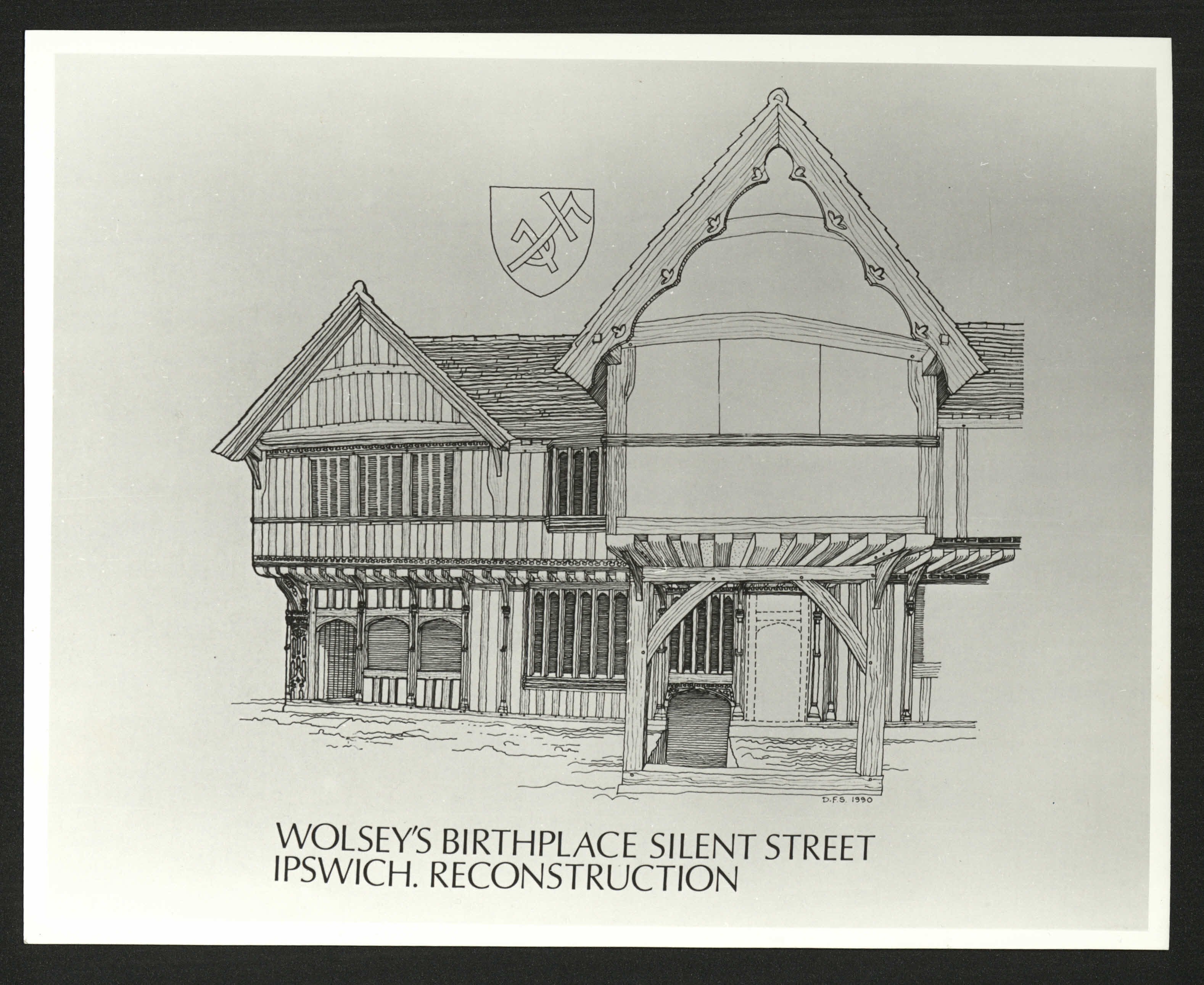
Royal Favour
Thomas Wolsey was first employed in the Royal Household by Henry VII who was reducing the power of the nobility, so keen to promote people from working backgrounds.
After the young Henry VIII became King in 1509 Wolsey started to be promoted. Wolsey and Henry VIII got on very well and were even described as friends. Early in his reign, Henry VIII wasn’t interested in running the country so left much of the work to Wolsey and even granted him permission to make decision on his own.
In 1515, Wolsey was made Lord Chancellor, like being Prime Minister. His job involved long hours of work, many meetings, visits abroad, and lots of letter writing.
In the same year he was made a Cardinal, and in 1518 Papal Legate, which made him a direct representative of the Pope in England. He would make official visits, appoint people to roles and write new regulations.
Together these roles meant that next to the King, Wolsey was the post powerful person in the country. Wolsey was earning £30,000 a year, compared to a typical worker who would earn £9 a year.
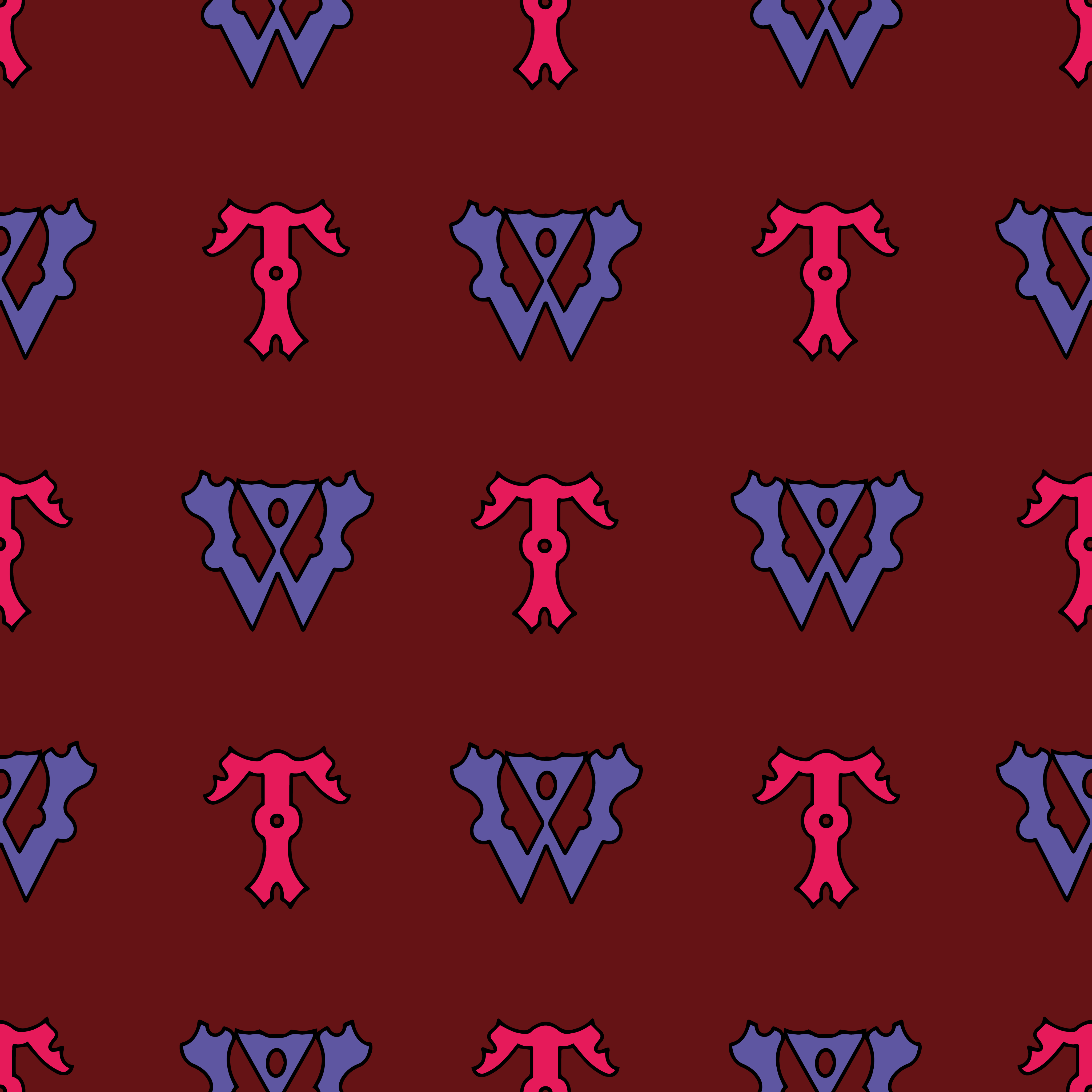
Cardinal College
Cardinal College was Thomas Wolsey’s intended legacy for Ipswich. The plan was grand in scale like the college buildings of Oxford and Cambridge.
The school was intended to be for students who would go on to University at Cardinal College Oxford, which today is Christchurch College.
Several monasteries had to be closed to clear the site for the college, and money from local churches was used to help fund the construction. The foundation stone was laid on 20th June 1528.
As well as directing the design of the college Wolsey selected the textbook which would be used for teaching. He wrote an introduction to the book saying that the teachers had to be good quality and that physical punishment was not allowed.
When Wolsey fell from grace, Henry VIII cancelled construction of the College while it was still being built. Much of the impressive white stone and high-quality building materials were removed and used in the construction of the Palace of Whitehall in London.
The College site extended from St Peter’s Dock to Silent Street. The water gate for the College, or Wolsey’s Gate, remains next to St Peter’s Church, which was the College Chapel.
What would Ipswich be like if the College had survived?
Wolsey Gate is the last remnant of the school founded by Cardinal Wolsey in 1528. The school was designed to prepare students to attend Cardinal College at Oxford University. Wolsey's Gate was built to serve as a ceremonial gateway for visitors arriving by river. In Tudor times the River Orwell was much wider than it is now, and the gateway must have stood near the water's edge.
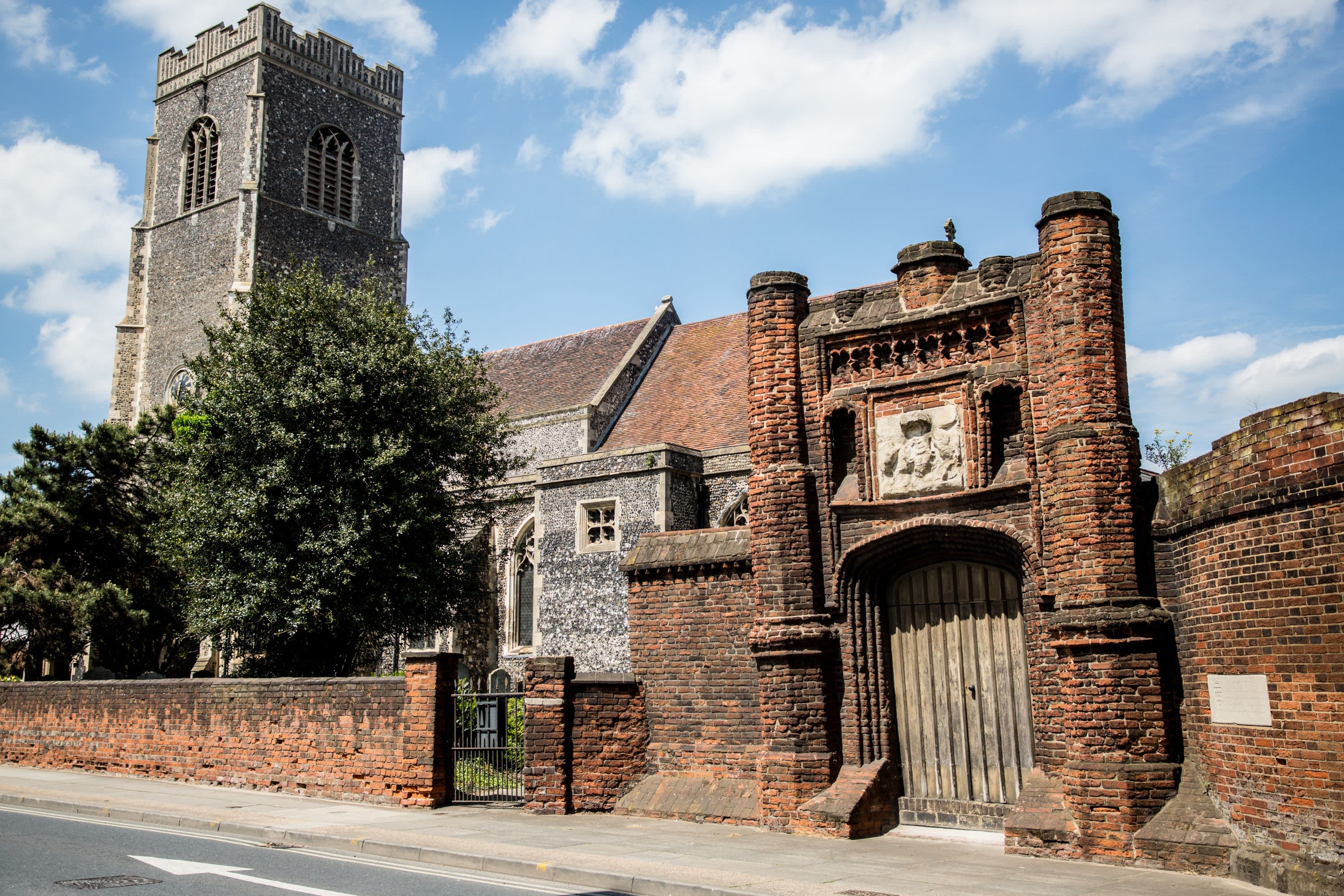
Tudor Ipswich
Steeped in history, Ipswich is one of the oldest continuously inhabited towns in England. During the Tudor period Ipswich was thriving, benefiting from the wealth of the busy port. Suffolk played a big role in the Tudor wool and cloth trade and the port of Ipswich was a vital part of this, exporting goods around England and Europe.
In Medieval times, the Shrine of Our Lady of Grace was a popular pilgrimage site, second only to the shrine at Walsingham in Norfolk. The town would be full of pilgrims and the Shrine was even visited by Henry VIII, Catherine of Aragon and Thomas Wolsey.
Ipswich has 12 Medieval churches (only Norwich and York have more). Many of these were built with money created from the town's maritime trade.
The centre of the town contained many Tudor buildings. Several of these can still be seen today such as the Ancient House, timber framed buildings on Silent Street and Christchurch Mansion.
Thomas Wolsey’s connection to Ipswich is still felt in the town today, with statues and buildings bearing his name, including Cardinal Park, Wolsey's Gate, and the New Wolsey Theatre.
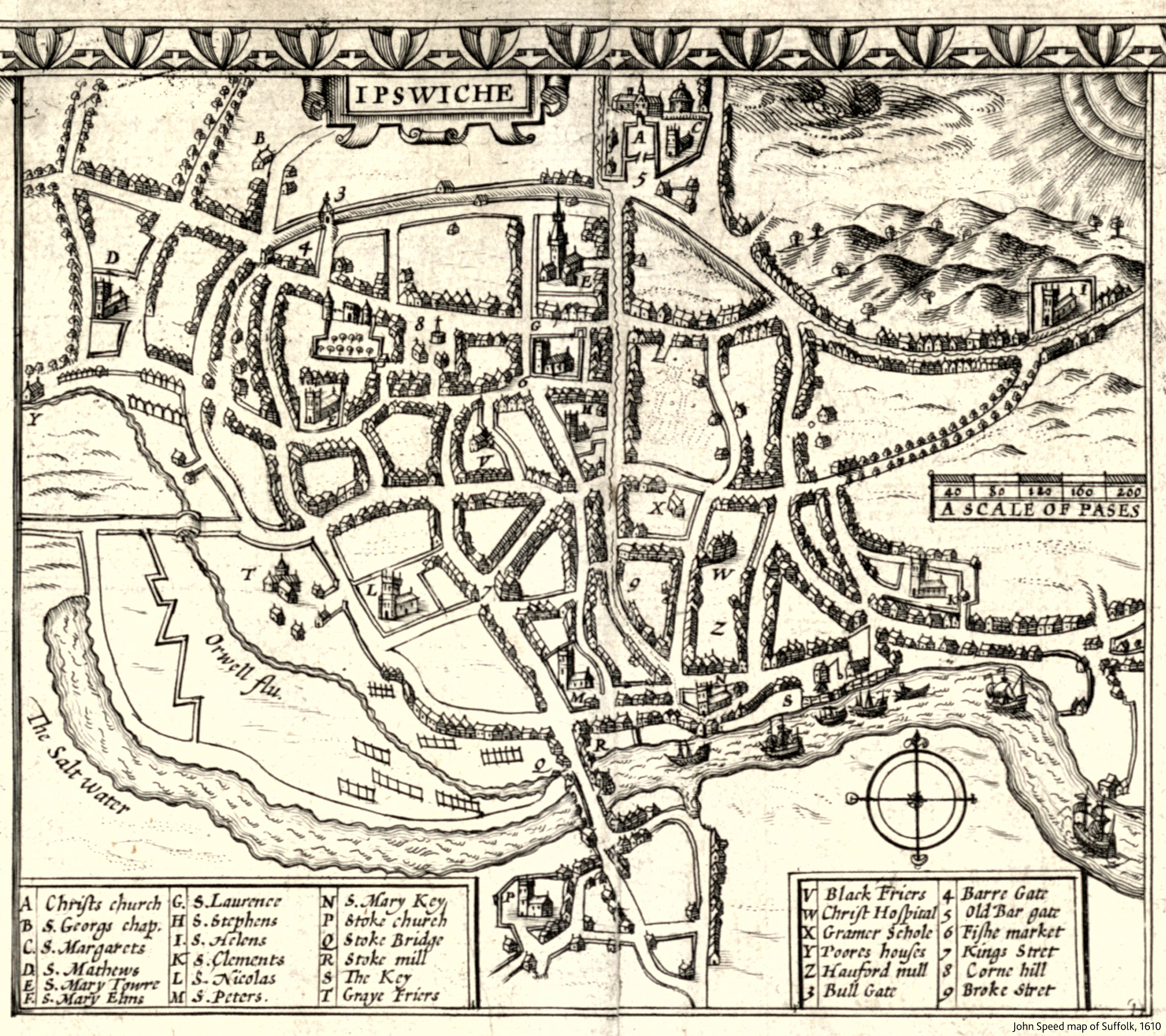
Our Lady of Ipswich
Our Lady of Grace was a popular religious shrine dedicated to the Virgin Mary. The shrine is first documented in 1152 and during Tudor times only the shrine at Walsingham attracted more visitors.
The individual frames of a traditionally animated film are photographs of drawings that are first drawn on paper.
The shrine was on Lady Lane, near Westgate Street today near the New Wolsey Theatre.
During the Tudor period both King Henry VIII and Queen Katharine of Aragon visited the shrine, as did Thomas Wolsey. Sir Thomas Moore also visited and wrote about the miracle of Anne Wentworth a 12-year-old girl who had suffered seizures until visiting the shrine and during a vision was cured of her illness.
When King Henry VIII separated England from the Catholic Church many shrines, such as Our Lady of Ipswich were destroyed. The statue of the Virgin Mary was removed in 1538 to be burnt. However, there are no accounts of the statue being destroyed.
It is widely agreed that the statue survived and was smuggled out of the county. The statue is now in the local church in the Italian town of Nettuno.
Strawberries and Cream
Cardinal Wolsey is thought to have invented the summer classic of strawberries and cream.
Henry VIII first had the dish at a Hampton Court banquet in the early 1500s. Hampton Court had the largest Tudor kitchens of the time so it is likely that the kitchen staff were the real creators of this new dessert idea.
Wolsey went on to serve strawberries and cream at a tennis match held in the ground of his palace at Hampton Court. Some people say this was the start of the long association with strawberries and cream!
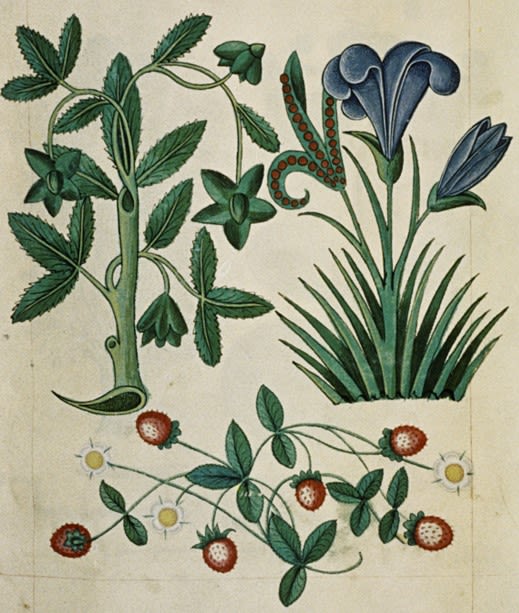
The Cardinal's Hat
Thomas Wolsey was made a Cardinal in 1515. This made him the Pope’s direct representative in England with extensive power and responsibility over the church.
During the Tudor period Cardinals typically dressed in red robes, on ceremonial occasions they would wear wide brimmed red hats with long red tassels called a Galero. Receiving your hat was an important part of the ceremony of becoming a Cardinal.
After much discussion and frustration about the delay Thomas Wolsey’s cardinal hat arrived in England, from Italy in November 1518. The hat and accompanying staff began the journey to London, but Wolsey quickly sent them back to Dover so the courier could be dressed in new clothes and the trip started again with proper ceremony.
When the hat arrived at Westminster Abbey it was displayed on the alter surrounded by candles before being placed on Wolsey’s head by the Archbishop of Canterbury during a grand service.
After the ceremony Wolsey and the hat were proceeded by two large crosses as they made their way to his home of York Place for a large banquet attended by King Henry VIII and Queen Katharine of Aragon.
Thomas Wolsey's Coat of Arms
Rich Tudors liked to put their stamp of identity onto their belongings to show others who they were and what was important to them. Thomas Wolsey was no different and used his coat of arms on his buildings and belongings.
Thomas Wolsey’s coat of arms includes a large crest with a red Tudor rose to show his connection to the royal family of Henry Tudor.
The red lion in the centre is a connection to Pope Leo X Medici who was the Pope who made Wolsey a Cardinal.
The black crows are the arms of St Thomas Becket, the Medieval Archbishop of Canterbury who became a saint after he was murdered by supporters of King Henry II in 1170. Wolsey would have wanted to link himself to the popularity and reputation of the saint.
The blue leopard heads are thought to be a connection to the powerful de la Pole family, Earls of Suffolk. A way for Wolsey to show his connection to his home county.
At the top of the crest is Wolsey’s large red cardinals’ hat with the tassels falling down either side.
Thomas Wolsey’s heraldic motto was Dominus Mihi Adjutor - The Lord is My Helper.
The Wolsey Pageant
In 1930 Ipswich hosted the Wolsey Pageant in Christchurch Park. The event was to mark the 400th anniversary of the death of Thomas Wolsey.
It was a huge event with a large play about the rise and fall of Wolsey. The story used several sections from William Shakespeare’s play Henry VIII mixed with big processions, folk dancing and court scenes.
Between the 23-28 June there were nine performances of the play involving over 1,000 performers. Due to the popularity of the show there was a double cast with two actors playing every character on different nights.
Over 20,000 people attended over the week-long event with a special visit from HRH the Prince of Wales. People decorated Ipswich streets, local businesses volunteered to help, and special buses and trains were put on.
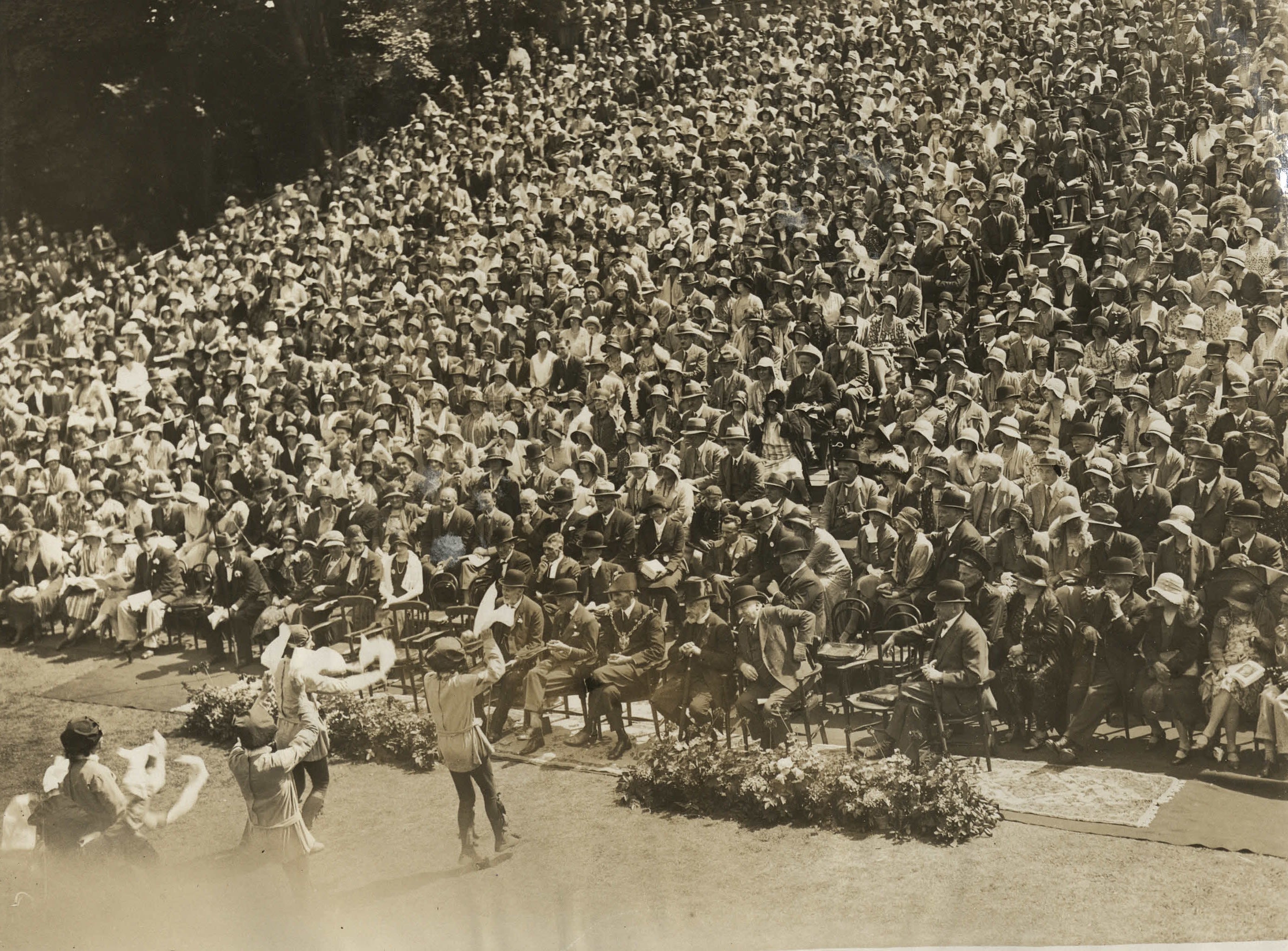
Wolsey's Cat
In the Tudor period cats had a bad reputation. In 1484 Pope Innocent VIII had declared that cats were the devil’s favourite animal. Many people associated cats with witchcraft.
Wolsey was said to have several cats as pets to keep him company while he worked, and often sat with him during meetings. He even apparently took two cats with him whenever he travelled away from home.
Given the mysterious reputation of cats was Wolsey showing himself beyond this with his love of the animal? Or by spreading rumours associating him with the devil’s pet were Wolsey’s enemies hoping to cause him harm?
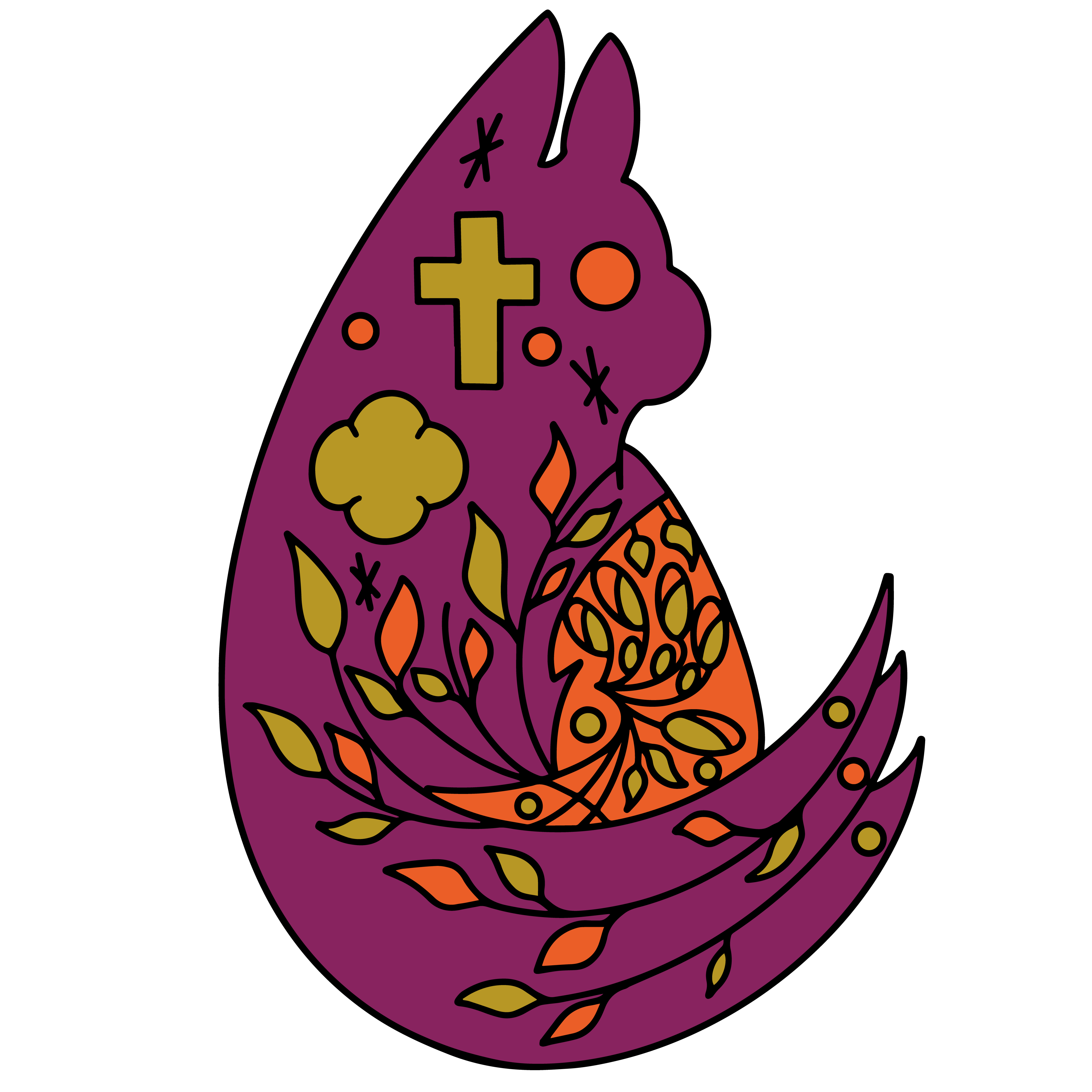
Friend or Foe?
Throughout history Thomas Wolsey has been presented in many ways, both positive and negative. After his fall from power many images of Wolsey would have been removed, and few people would have dared to mention him for fear of displeasing the King.
The earliest biography of Thomas Wolsey was written by his assistant George Cavendish in 1558. Cavendish was from Glemsford in Suffolk and worked closely with Wolsey arranging his dressing, food, and household matters. His biography of Wolsey describes many of the events of Wolsey’s life and is very sympathetic to him, seeing him as a victim of the times. This is understandable as Cavendish was a loyal servant and defended Wolsey after his death.
Many later biographies and books present Wolsey very differently to Cavendish. He is described as ruthless, vain and that his ambition was a negative thing.
But more recently opinions have changed, talking about Wolsey’s interest in the arts and education, his hard work, and dedication to King Henry VIII.
But what do you think?
How should Thomas Wolsey be remembered?
www.suffolkarchives.co.uk

